At a cemetery, there are touching memorials to the departed all around you. Flowers and trinkets with true sentimental value are lovingly placed on gravestones. Then, of course, there are written testaments to the lives of those who have died on the stones themselves. But the next time you’re at a cemetery, see if a glinting object catches your eye. You’ll probably notice that this is a shiny coin as you get closer. And it’s there for a very special reason.
The Coins
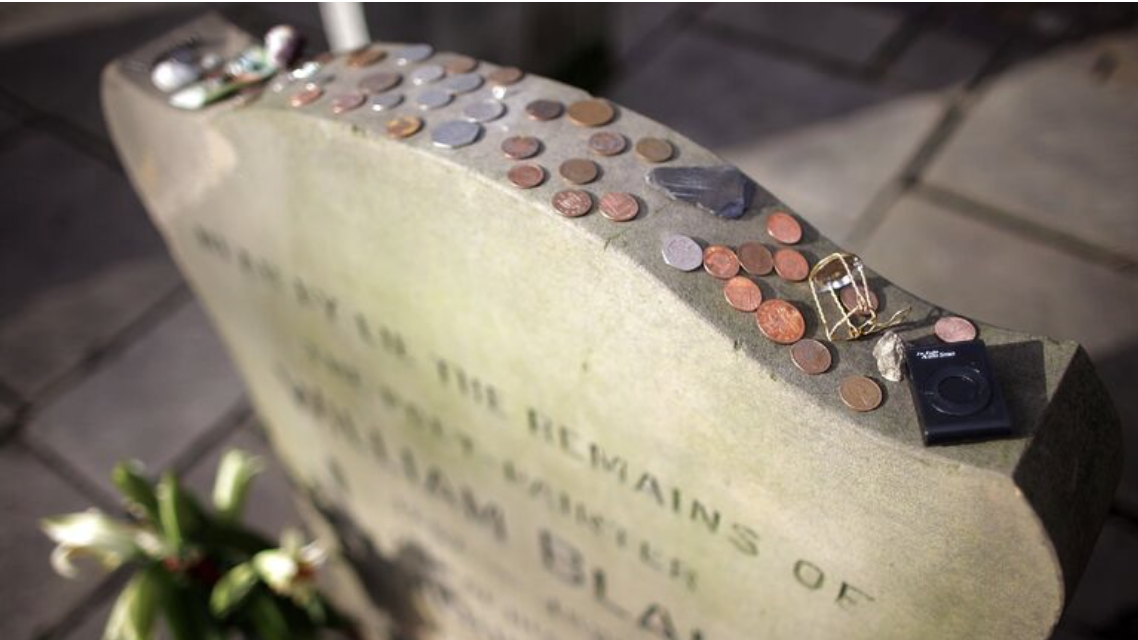
So, where can you find these gravestone coins? Are they visible? Most of the time, the money is placed on top of the stones. While this may appear strange, it is a fairly common practice that occurs in many cemeteries across the United States. But that’s not all.
A Closer Look
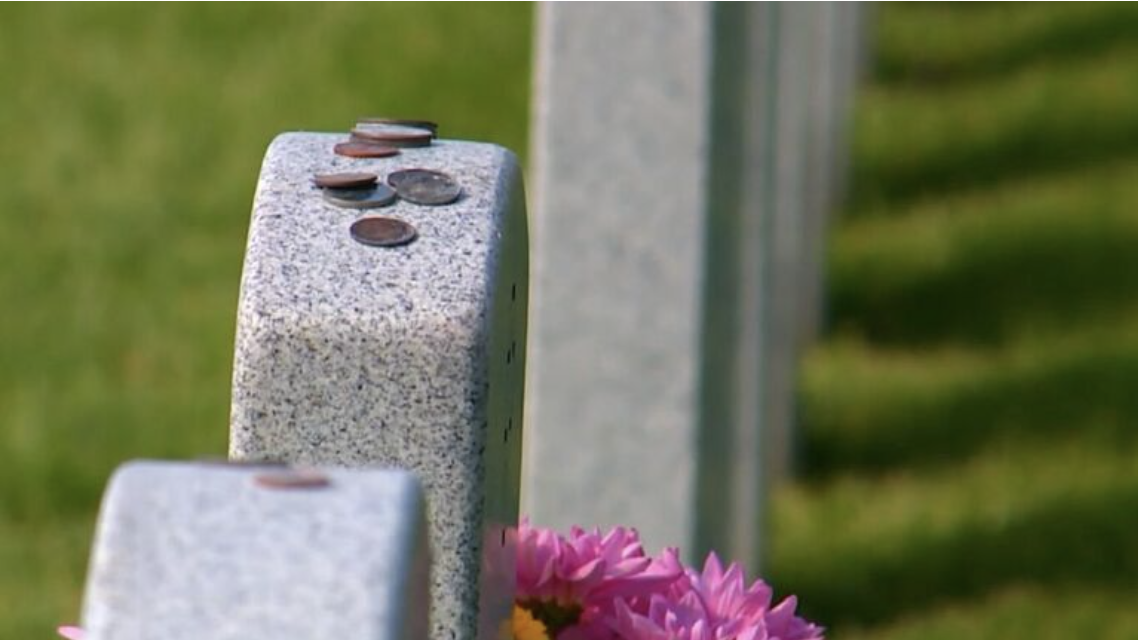
If you look closely at those tombstones, you’ll notice a variety of coins with varying monetary values. A collection of dimes or pennies, for example, could be resting on the edge of the grave marker. Seems pretty arbitrary, doesn’t it? It’s almost as if they just emptied their pockets.
Particular Meanings
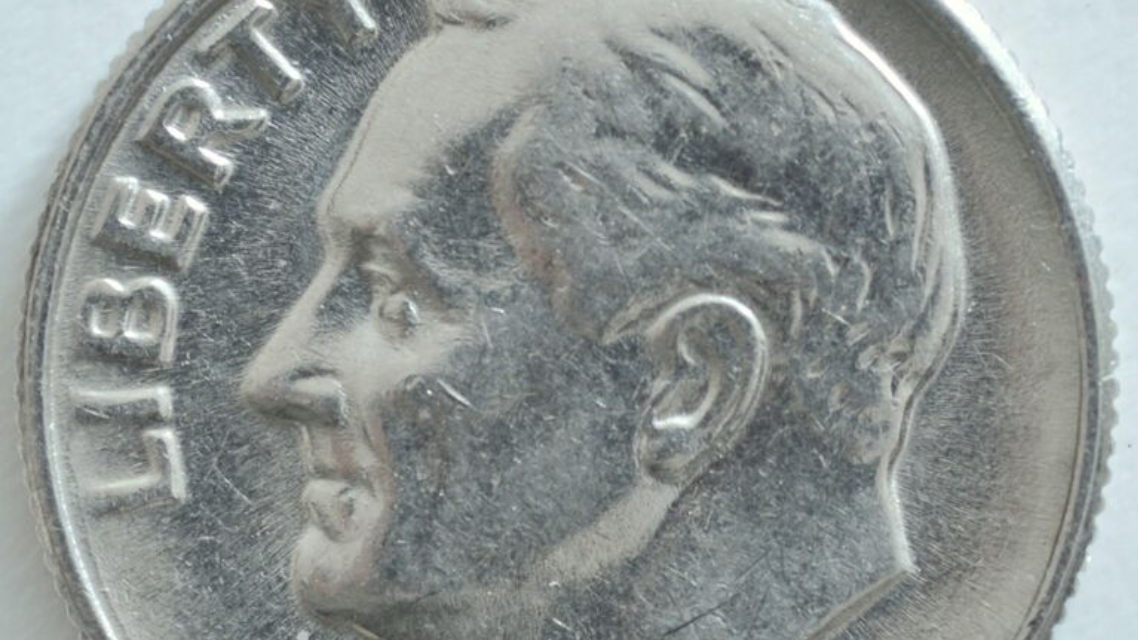
But it’s not just a random collection of cash. The different coins, you see, have very specific meanings to those who leave them at the cemetery. And once you understand the significance of this tradition, you’ll never look at a quarter the same way again.
Mere Decorations?
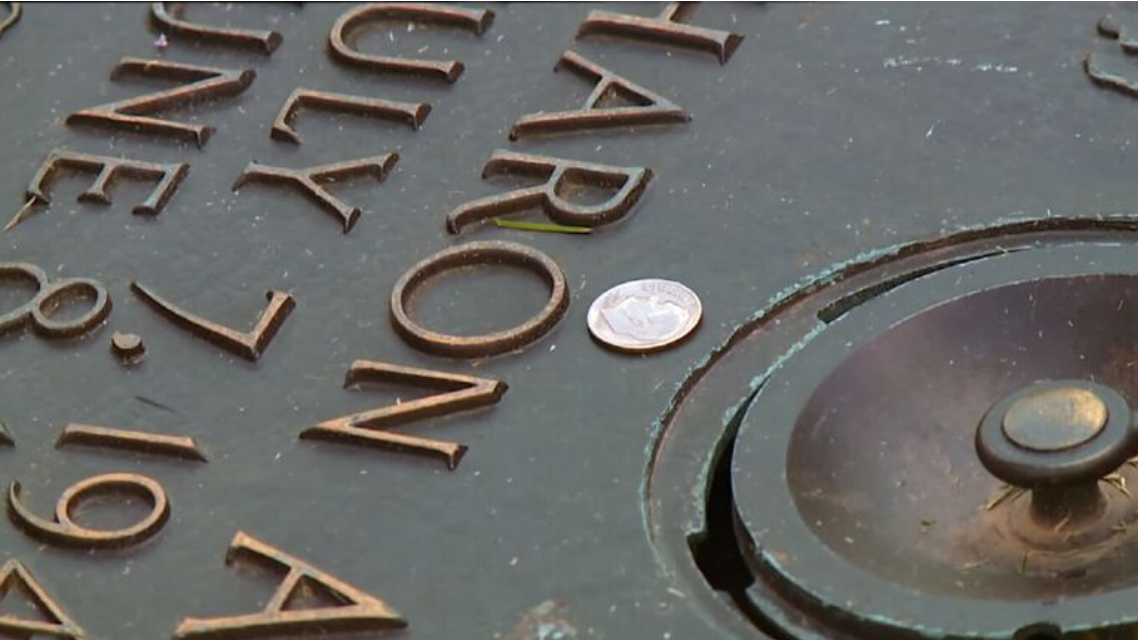
Coins aren’t the only thing you’ll find in a graveyard, of course. You’re bound to notice other objects sitting around the grassy plots and the stones that memorialize the dead as you walk around. And, while these may appear to be mere decorations, perhaps providing some comfort to mourners, this is not always the case.
Not Flowers Anymore?
`
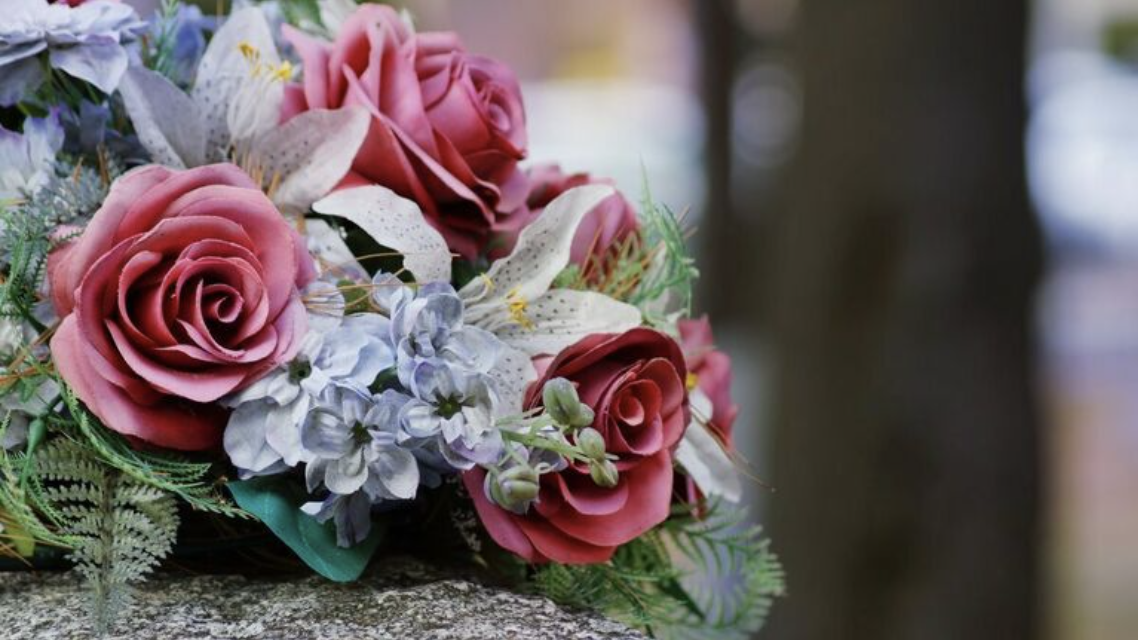
So, what exactly do they all mean? Let’s start with what is arguably the most traditional memento left next to tombstones. Of course, we’re talking about flowers. Blooms are a lovely way to remember a loved one and can also be used to brighten up a garden. But what prompted this practice? When did it become popular?
Ancient Times
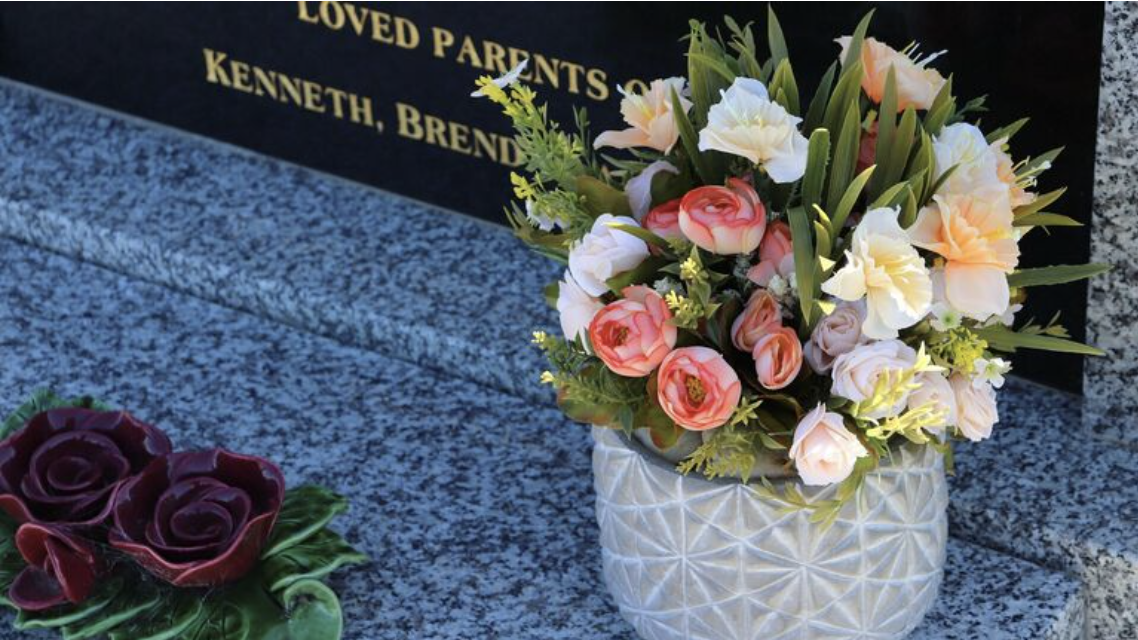
That tradition dates all the way back to ancient Greece when the people wanted to honor their fallen soldiers. Flowers were laid around a plot in a custom known as “zoai,” and mourners kept watch over them. That’s a nice touch.
Afterlife Connection

From there, it was essentially a waiting game. If the plants on the burial site opened up and bloomed, it was thought that the person’s spirit had found some sort of peace in the afterlife. It’s not quite as simple as leaving a coin on a gravestone, but it seemed to work for the Greeks.
Roman Adaptation

In any case, the Romans adopted the tradition as well, albeit with a slightly different meaning. Instead of seeing flowers as a spiritual sign, these ancient people saw them as gifts they could give to their deceased loved ones. What’s the deal? They believed that human souls lingered near their burial plots after death.
The Real Reason
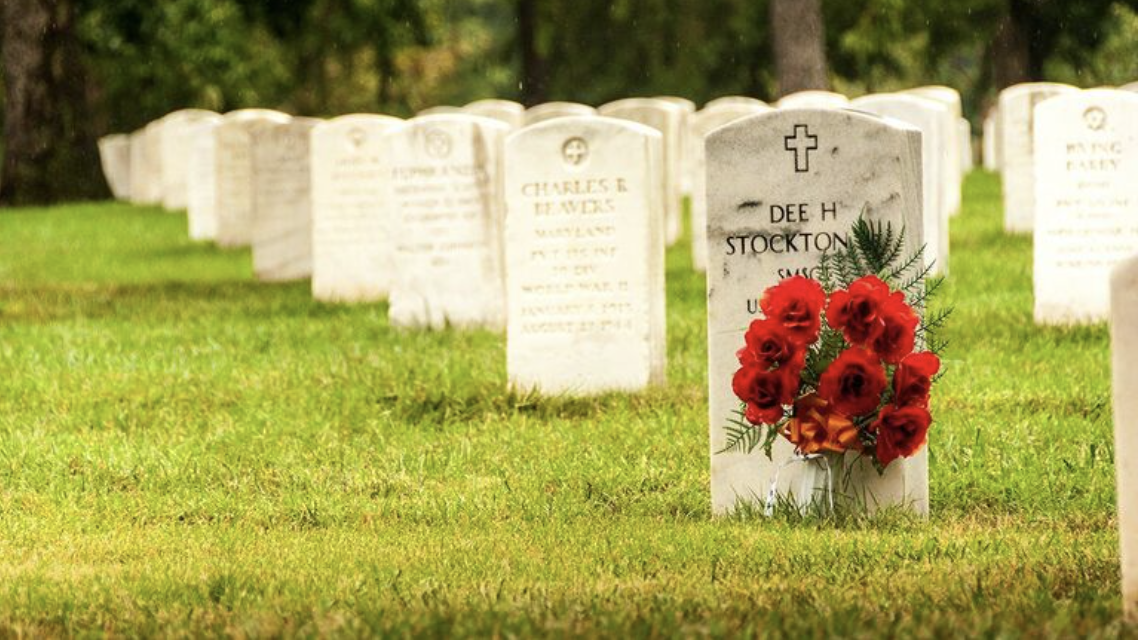
As a result, flowers and other mementos were left in the area. And the blooms may have played an additional, albeit less appetizing, role in making the air smell sweeter during the decomposition process. Yuck. But there’s something else you should know. There is evidence that flower-laying dates back even further than Greek and Roman times.
Upper Palaeolithic Age
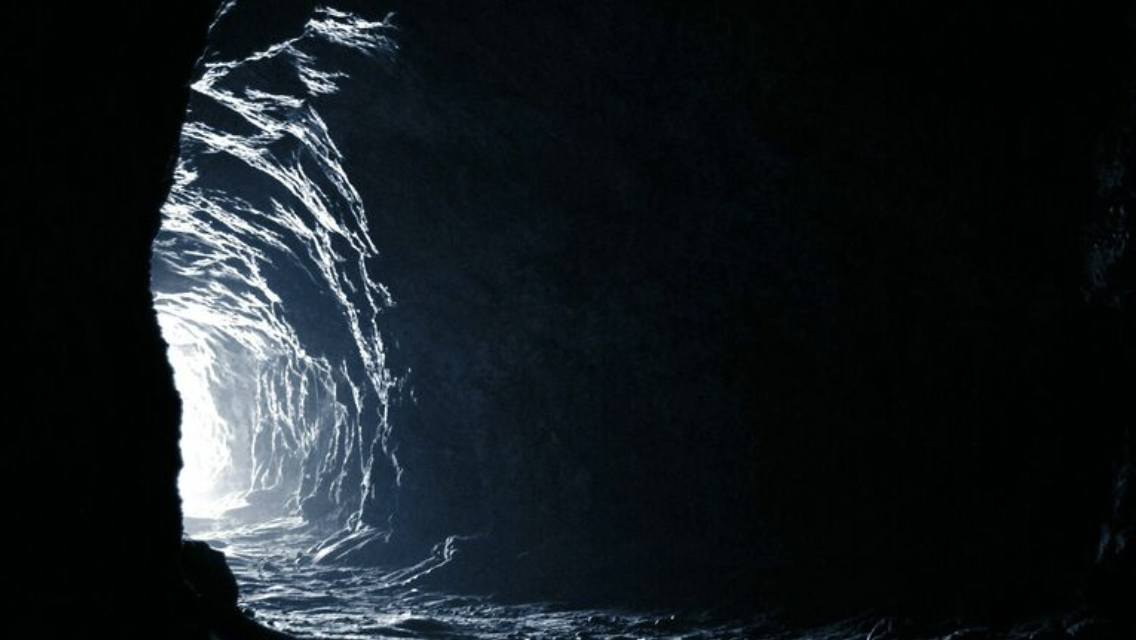
Yes, a discovery in 2010 suggested that Spanish people had been placing flowers at gravesites since the Upper Palaeolithic period. Wow! Pollen was discovered preserved inside a crypt within Cantabria’s El Mirón Cave. These botanical relics were discovered to be at least 16,000 years old. That is not a typo.
Significant Development?

How significant is this advancement? According to one researcher from the University of the Basque Country. When it comes to paleobotany, Mara José Iriarte-Chiapusso knows her stuff. She has also co-authored an academic paper on the discovery with fellow researchers Alvaro Arrizabalaga and Gloria Cuenca-Bescós.
Ritualistic?
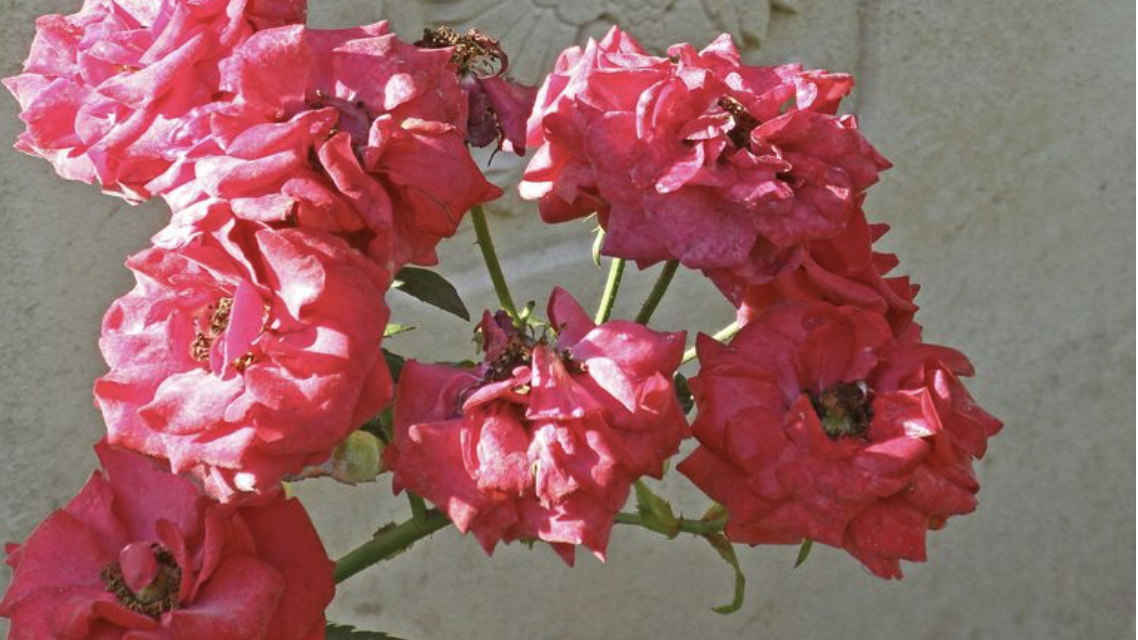
“They put whole flowers on the tomb,” Iriarte-Chiapusso said of the people who once lived in that part of Spain. However, it has not been determined whether the goal of placing plants was a ritual offering for the deceased or a simpler purpose, such as warding off the bad smells associated with the burial.”
The Color Of The Flowers

Iriarte-Chiapusso and her colleagues were also successful in identifying the color of the flora. “With their small, generally white or yellowish flowers, we would not regard them as colorful plants today,” she continued. Even if the greenery wasn’t the most beautiful in the world, it’s still impressive that we can learn so much about a practice that dates back thousands of years.
Ab Lincoln
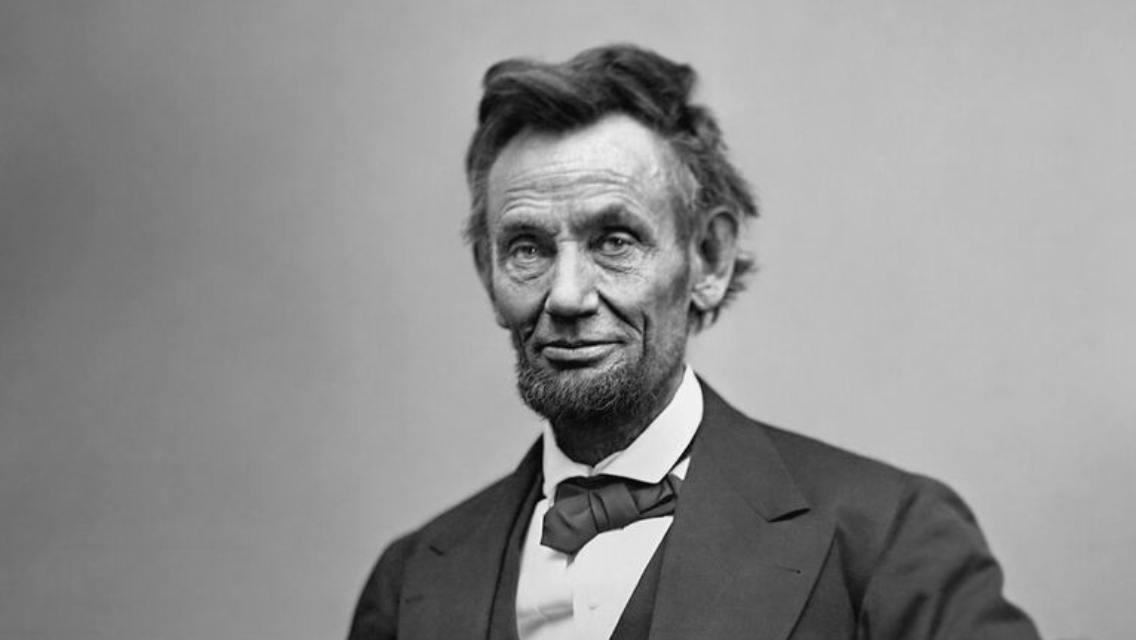
It’s also fair to say that the custom has been around for quite some time. However, it appears that it did not begin to take shape in the United States until after the Civil War ended. That’s according to historian Jay Winik, who claims Abraham Lincoln’s death was the catalyst.
New Tradition
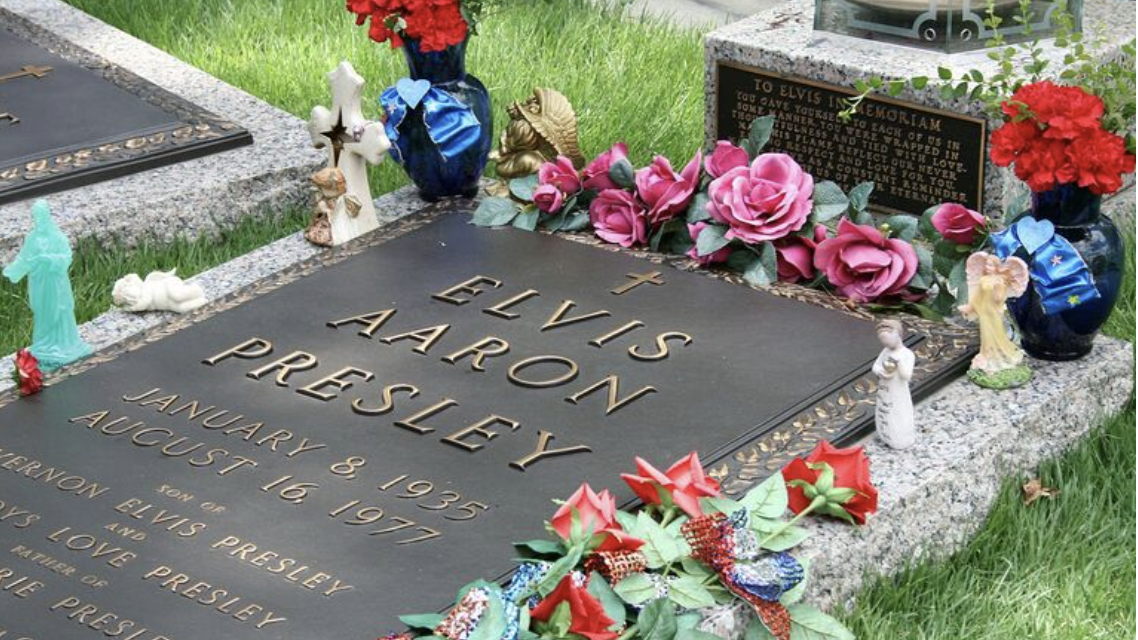
“Searching for a way to express their grief [for Lincoln], countless Americans gravitated to flower bouquets,” Winik wrote. Lilacs, roses, and orange blossoms – anything in bloom across the country. “A new tradition was born: laying flowers at funerals.”
Decoration Day
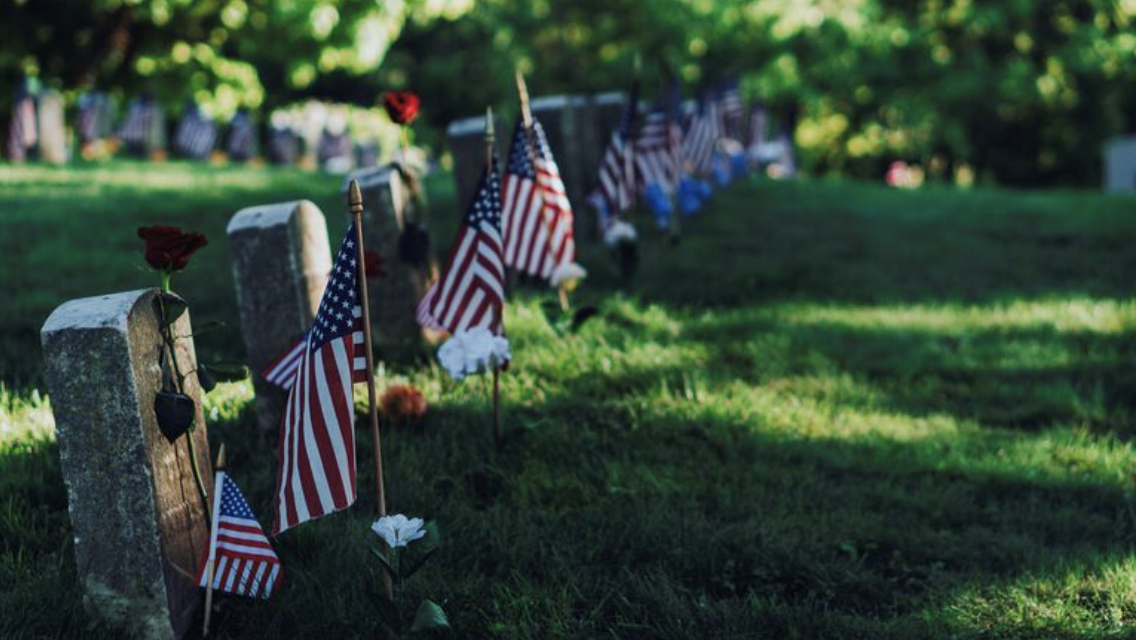
As a result, Decoration Day was born in 1868, though you may be more familiar with the occasion as Memorial Day. Flowers, however, do not only adorn the gravestones of those who have died while serving their country. They’re also discovered on the graves of others after they’ve died. It became a tradition, as Winik stated.
Does Choice Matter?
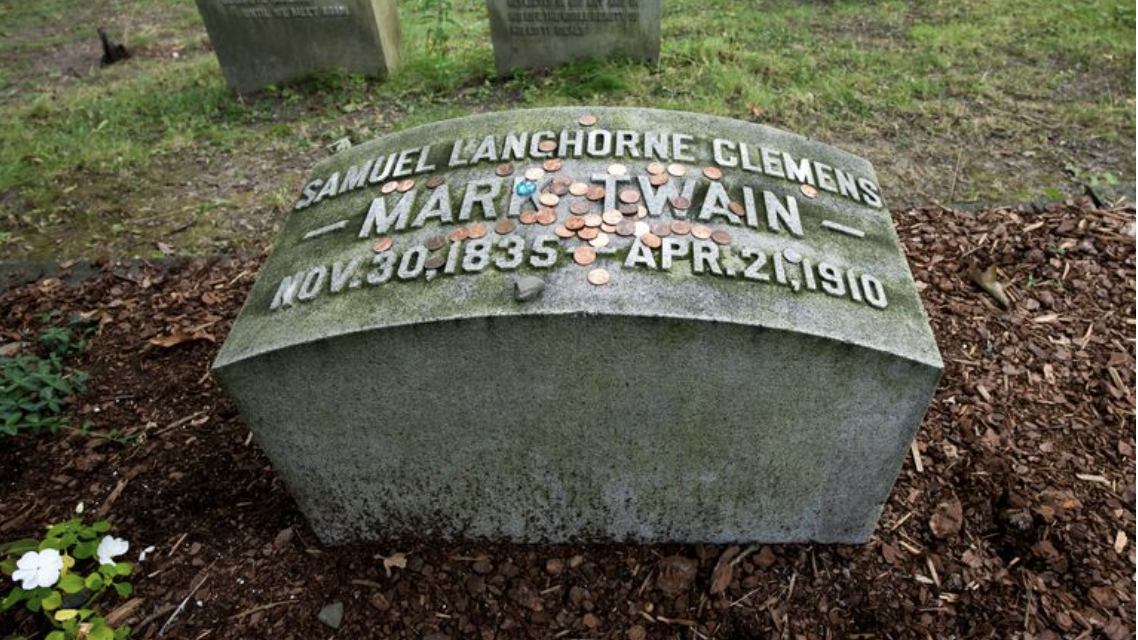
But does your choice of flowers have any significance? Yes, different varieties of blooms have their own distinct messages, similar to the coins placed on gravestones. So, before going to the cemetery, you might want to be a little more careful about the bouquets you pick up.
Different Flowers

Camellia flowers, for example, are thought to represent love for the deceased. That appears to be the case with carnations and red roses as well. Daffodils, on the other hand, represent “rebirth and hope,” according to a 2019 Southern Living magazine article. This makes sense when you consider that these yellow flowers typically bloom in the spring.
Pebbles?
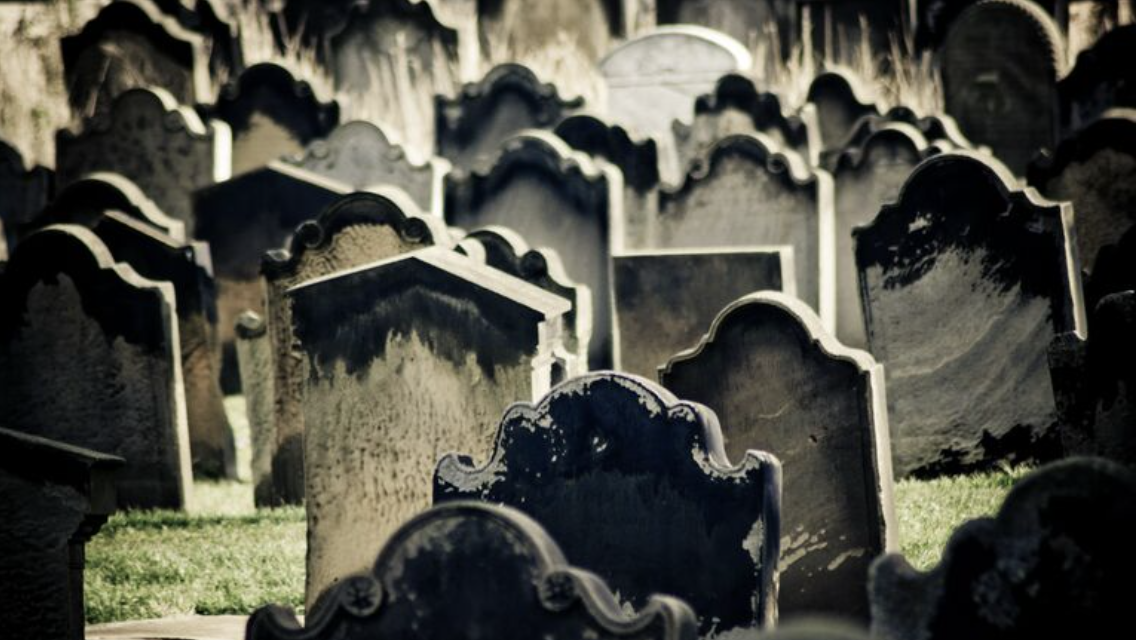
However, flowers aren’t the only thing you’ll find near graves. There’s a good chance you’ll find a few pebbles on the headstones as well. Is there, however, a deeper reason for their presence that goes beyond mere decoration? Without a doubt.
Again Ancient?
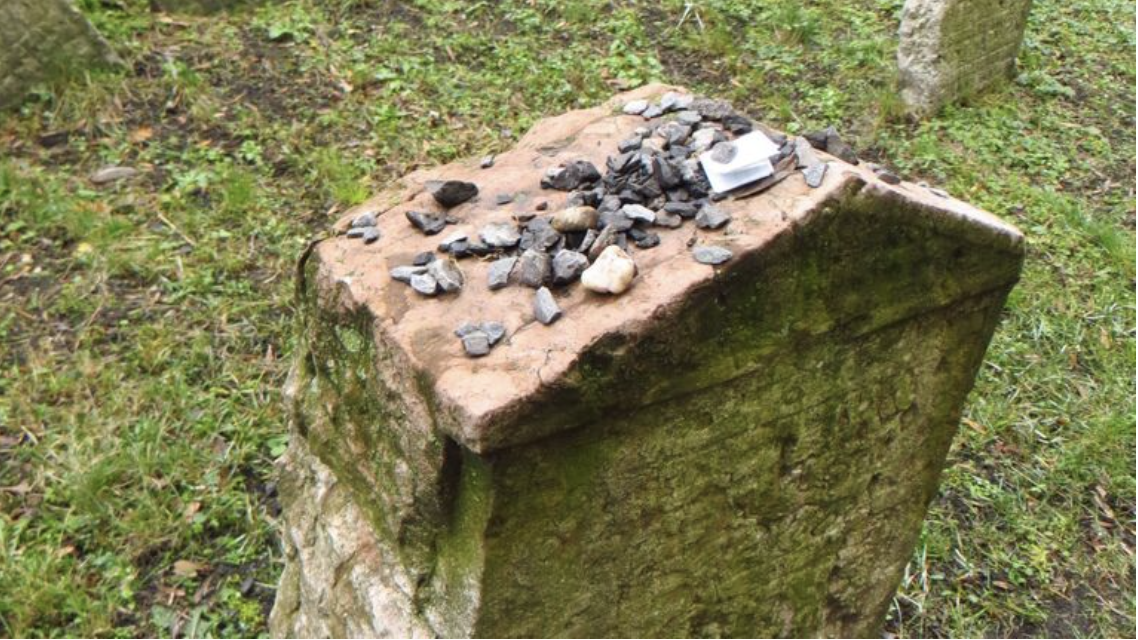
And, once again, this practice has its origins in antiquity. Stones were used in the distant past to protect dead bodies from roaming animals. They also functioned as proto-tombstones, indicating where certain people had been buried. Cairns is the common name for these arrangements.
Keeping The Traditions Alive
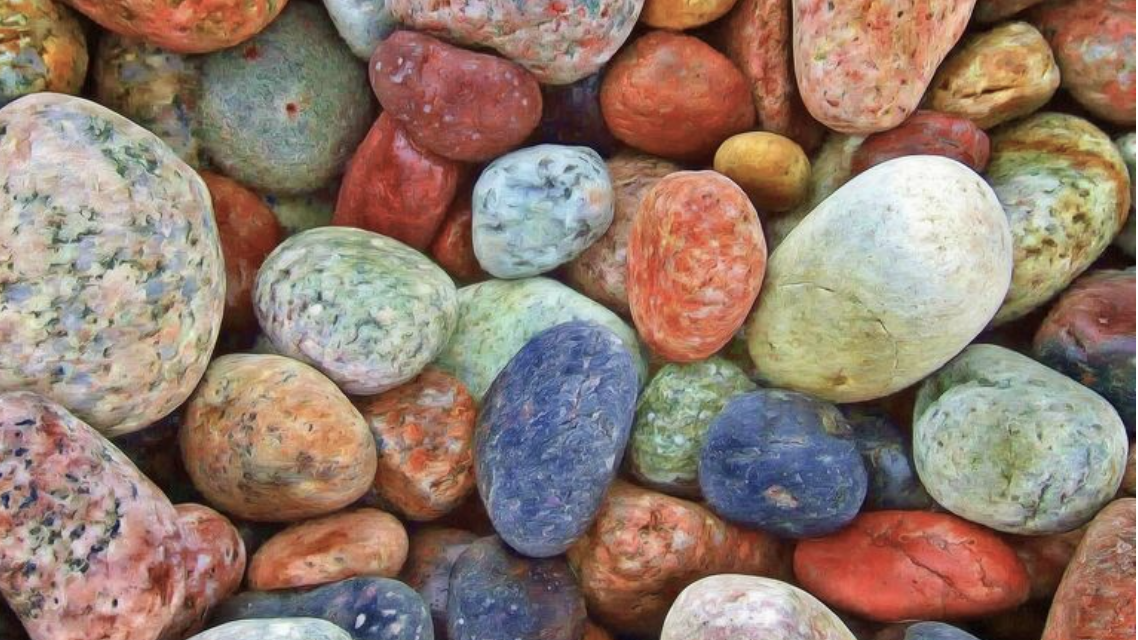
So, why are the stones reappearing now? Simply put, some people want to continue the tradition of honoring the dead that their forefathers established. And each pebble left on a plot appears to represent a single person who has stopped by to say hello. This could explain why some tombstones are littered with tiny rocks. Even after death, these people are still well-liked.
Which Ones To Keep?
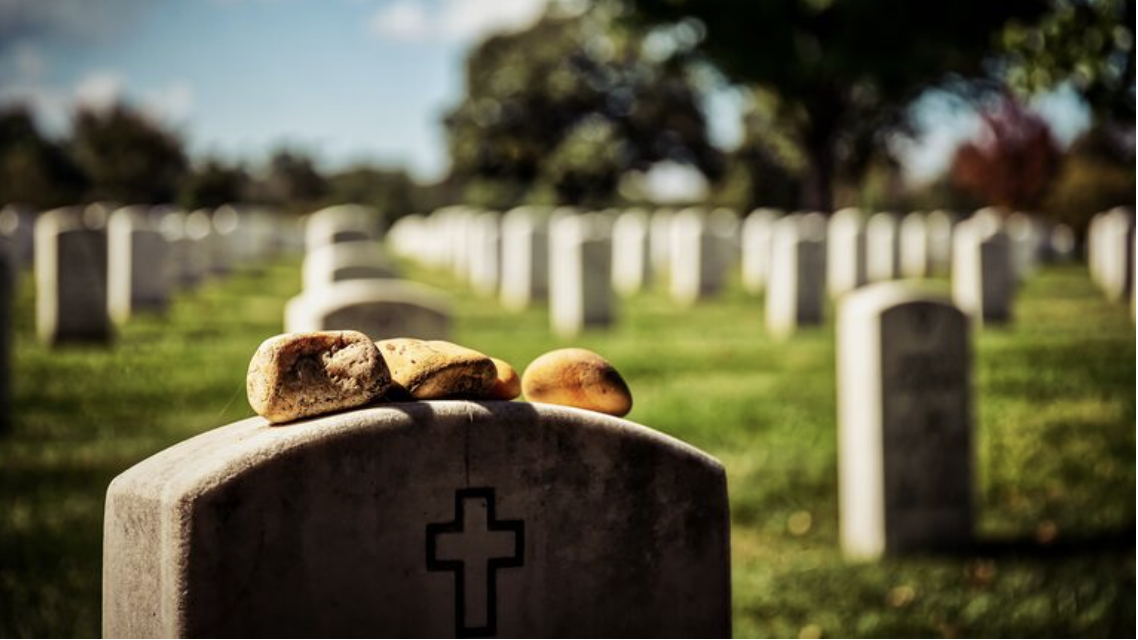
But by this point, you’re probably wondering what happens to all of this stuff. After a while, cemetery custodians are known to clear the pebbles off the gravestones, though they do not actually throw them away. Instead, the stones are scattered near their respective plots.
Flowers Die
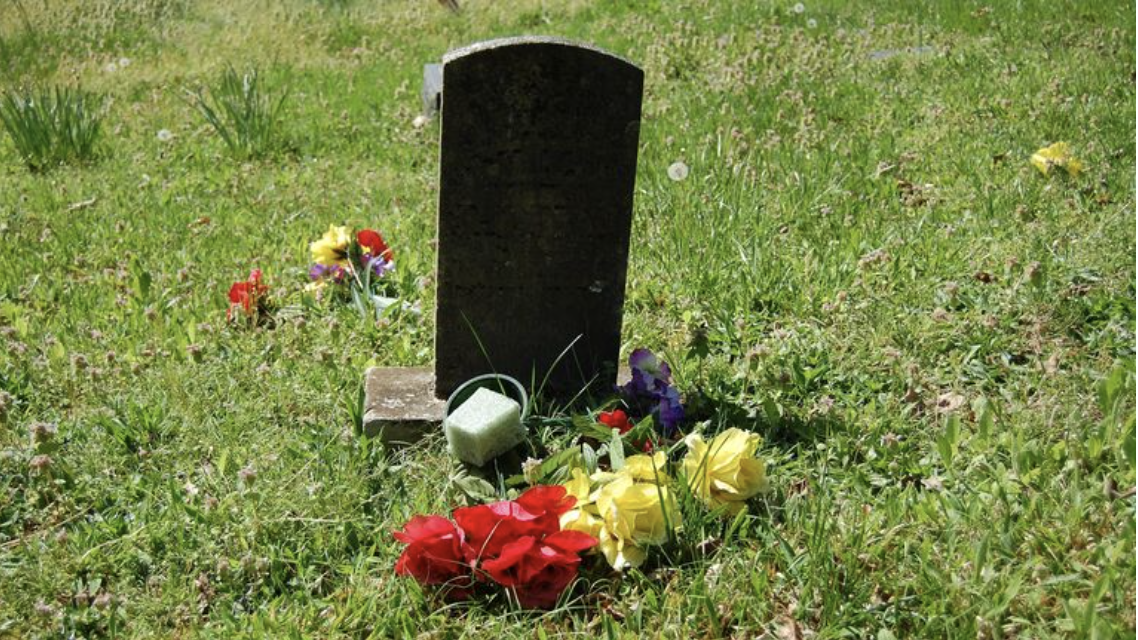
And, unfortunately, flower bouquets fade after a while, which cannot be avoided. When this occurs, the custodians must dispose of them. Any flora planted at a gravesite, on the other hand, can be cared for by the person who added it to the plot.
Coins Last?
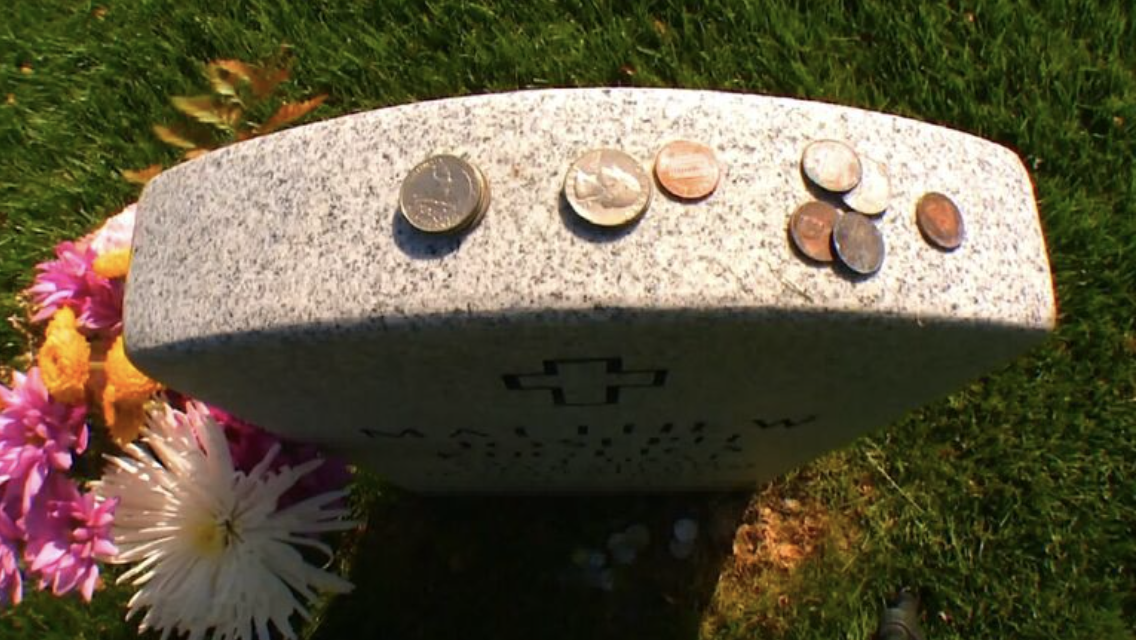
What about the coins, though? Are they eventually removed? So, unless you’ve been told otherwise, remember this advice for future visits to the cemetery. Simply put, you should never touch the coins. The pennies, nickels, dimes, and quarters on the tombstone are significant to both the deceased and the person who placed them there.
The Military Connection
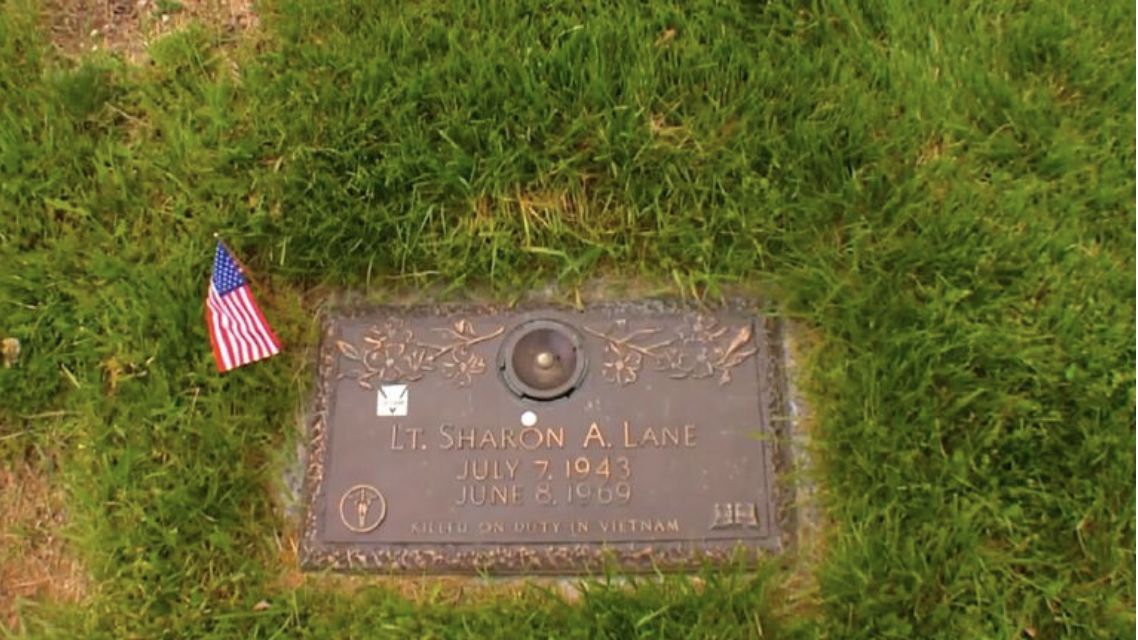
Why? The coins are typically placed on the gravestones of those who served in the United States military as a way to commemorate the life of a fallen service person. Furthermore, as previously stated, each denomination of currency has its own special message that only those in the know can decipher.
Paying Respect
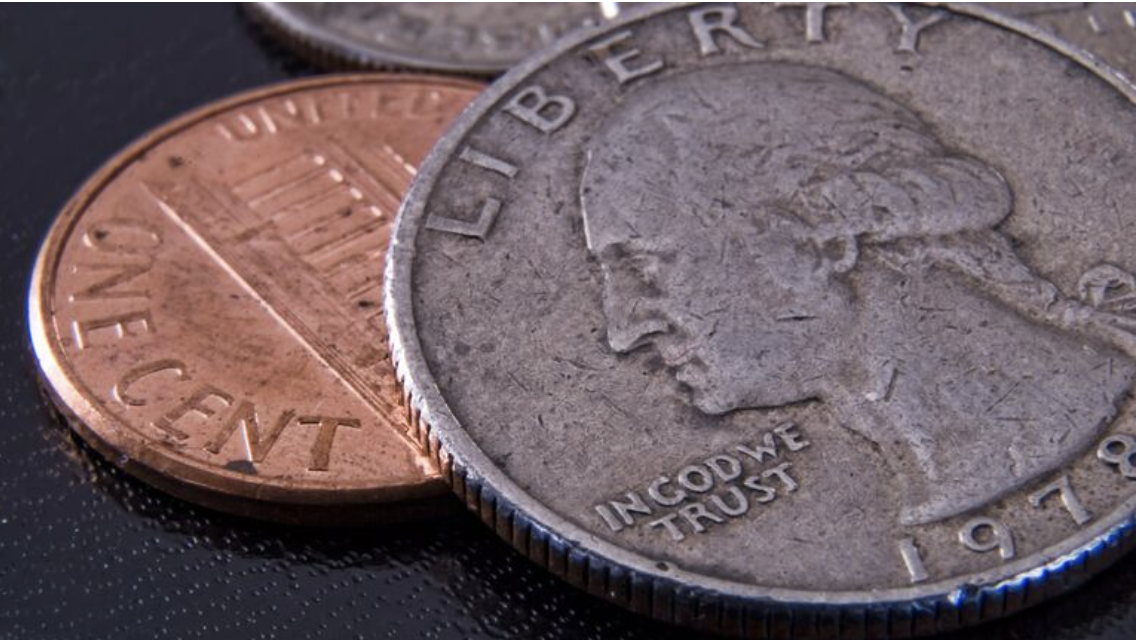
According to legend, a penny indicates that someone from outside the military has come to pay their respects to the soldier. It’s simply a nice way to notify their loved ones that a passer-by has stopped by. However, as the monetary value increases, the meanings become much more personal.
The Tight Connection
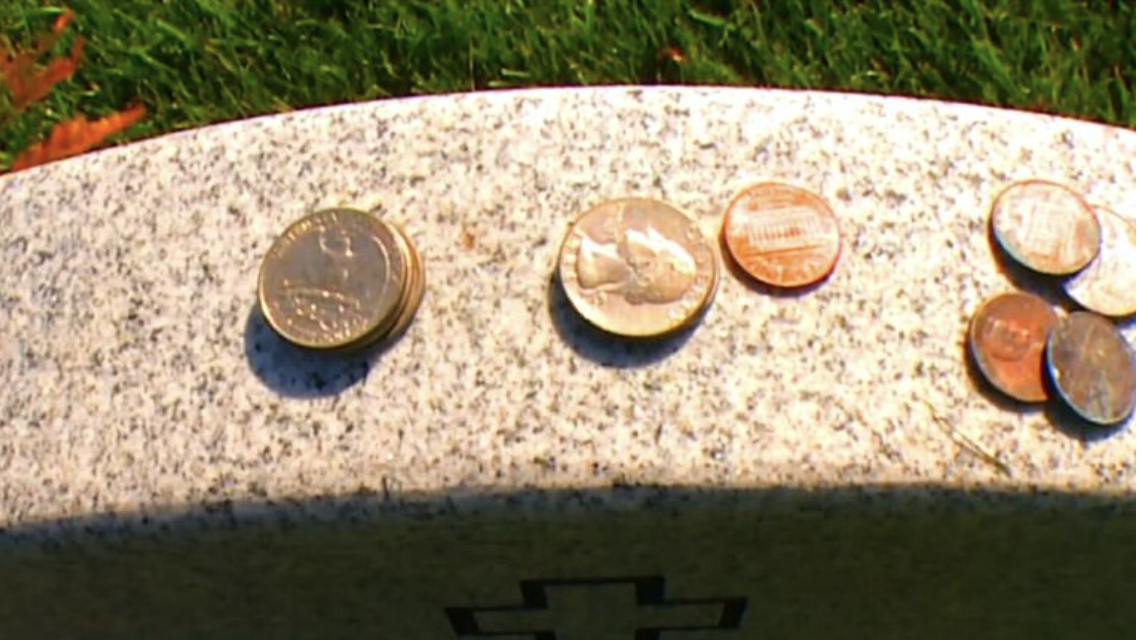
For example, leaving a nickel on the tombstone indicates that you went to boot camp with the deceased. The connection is strengthened by a dime, which indicates that you were in the same regiment. However, quarters have the most poignant meaning of all.
Dropped Coin
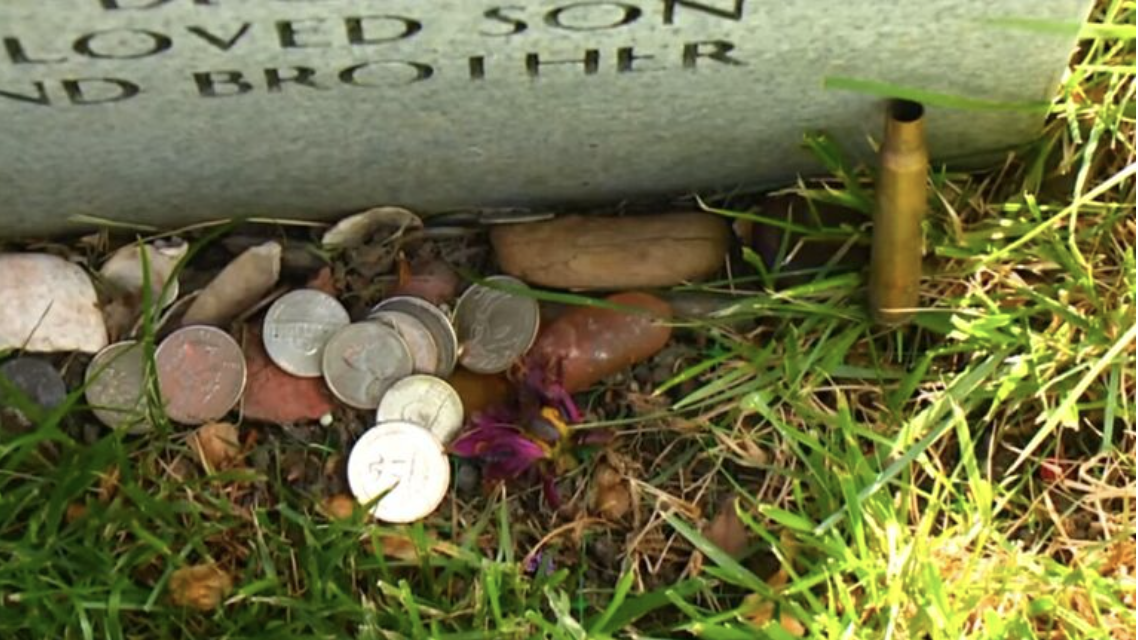
If you leave that coin at the cemetery, it means you were present when the soldier died. We can only imagine how upset a relative would be if they discovered a quarter at the burial site. But now that you know why the coins are left there, you might be wondering how the tradition began.
Vietnam War
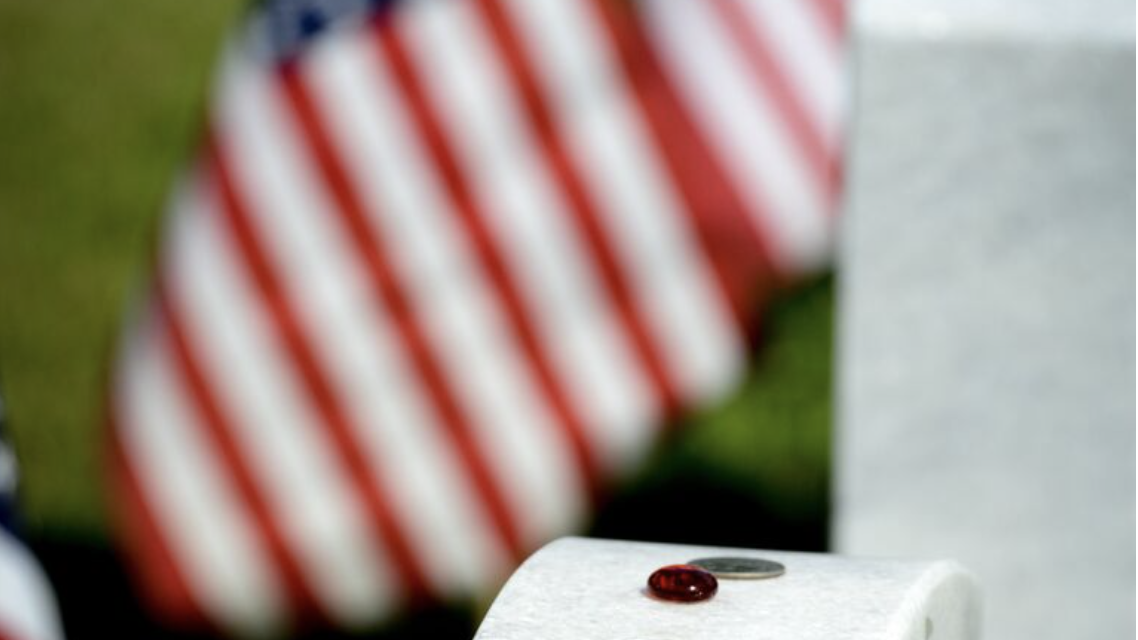
What is the truth? We don’t know for sure, but one theory holds sway. The practice appears to have started in the United States during the Vietnam War. To be sure, more than 58,000 American troops died during the 11-year conflict.
Wadena Pioneer
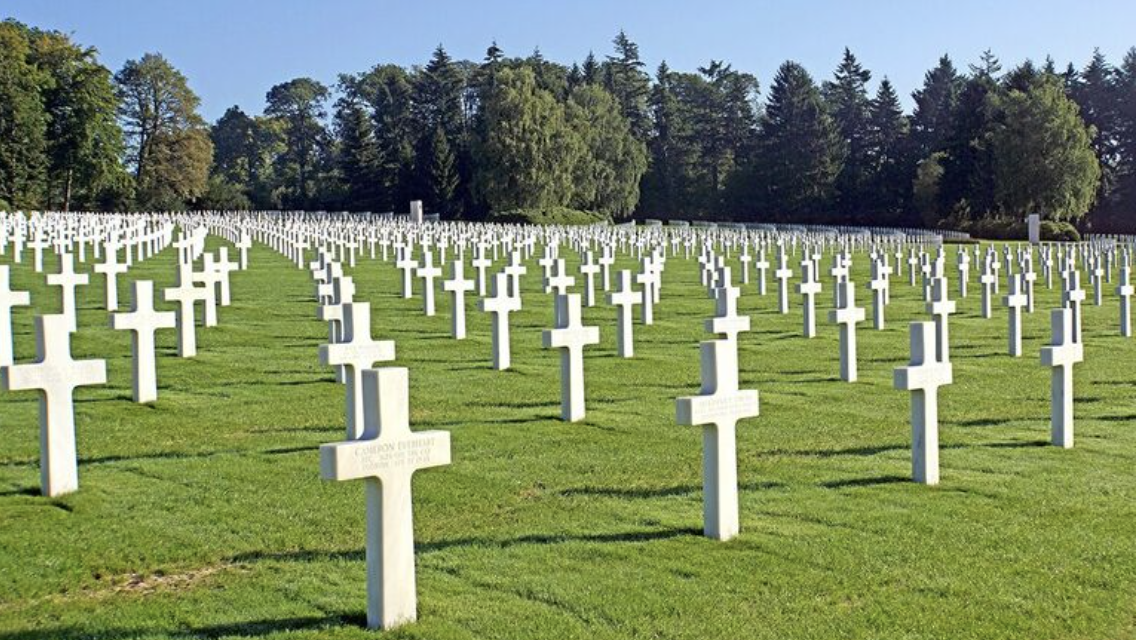
And, as we all know, that war sparked numerous protests throughout the 1960s and 1970s. Even among those who had served, the conflict was largely unpopular. So, if you wanted to talk about a fallen brother, there was a chance things would go wrong. That’s where the coins came in, according to a Wadena Pioneer Journal article from 2015.
Placing Coins
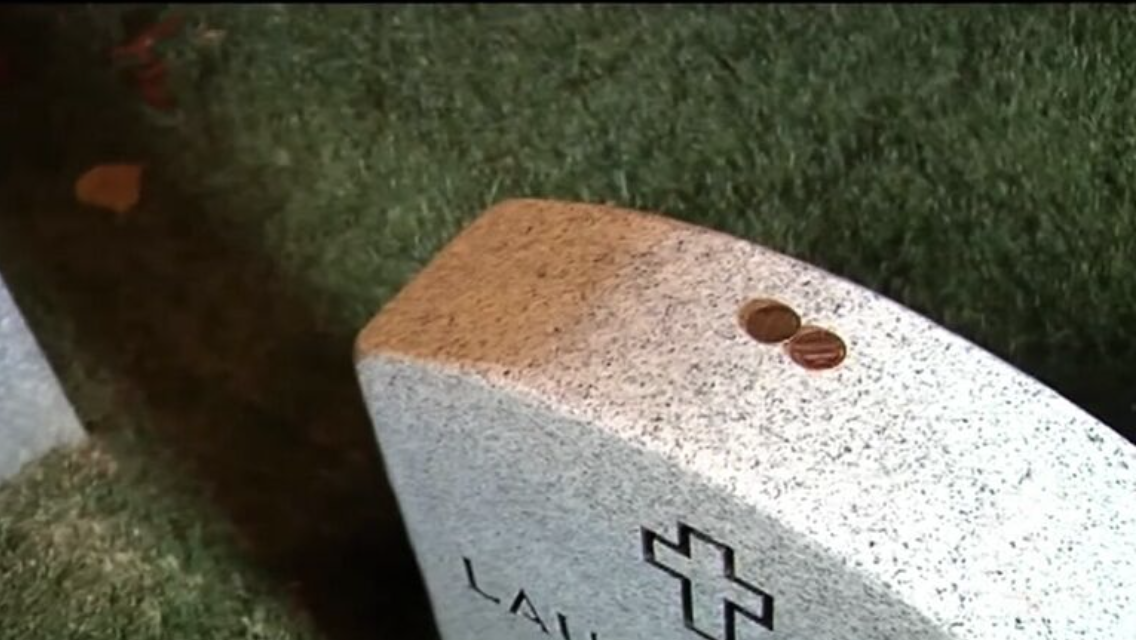
The simple act of placing a nickel, dime, or quarter on a graveside served to remember the dead while also removing the possibility of a heated debate. However, the Wadena Pioneer Journal claims that the coins did not appear for that reason alone. In some cases, they were left as a “down payment,” according to the newspaper.
Money For Drinks
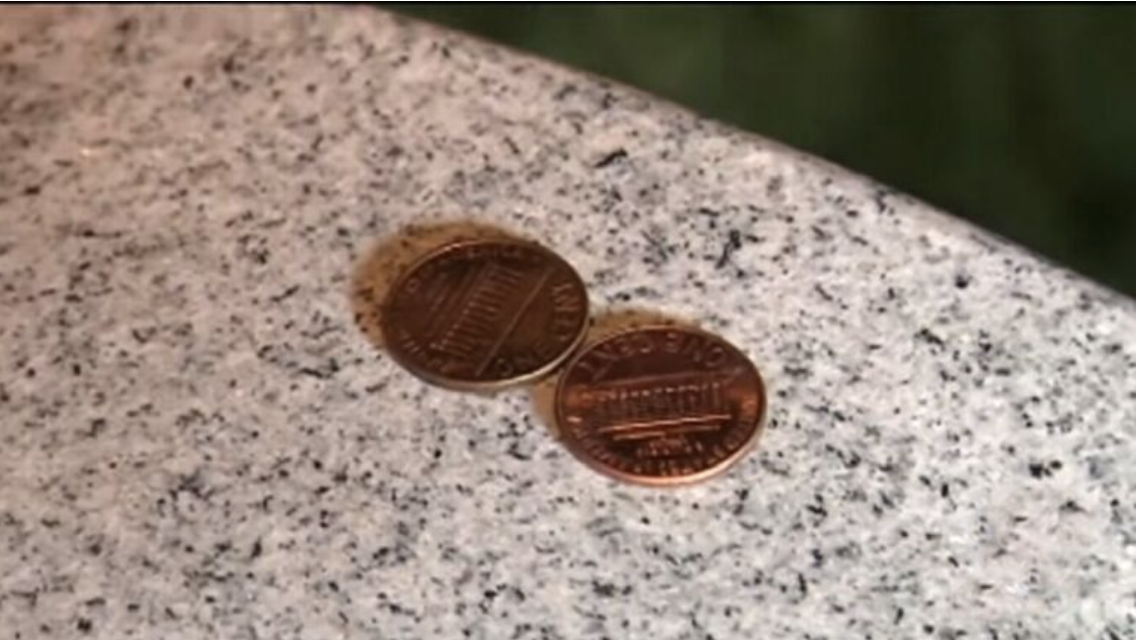
In a touching twist, the money was viewed as a way for vets to buy drinks for their deceased friends once they had also died – or, in other words, when they were reunited in the afterlife. What a lovely lady! And let us hope that God’s bar is worth the wait. However, there is something else to consider. The link between coins and death did not appear during the Vietnam War.
Roman Soldiers
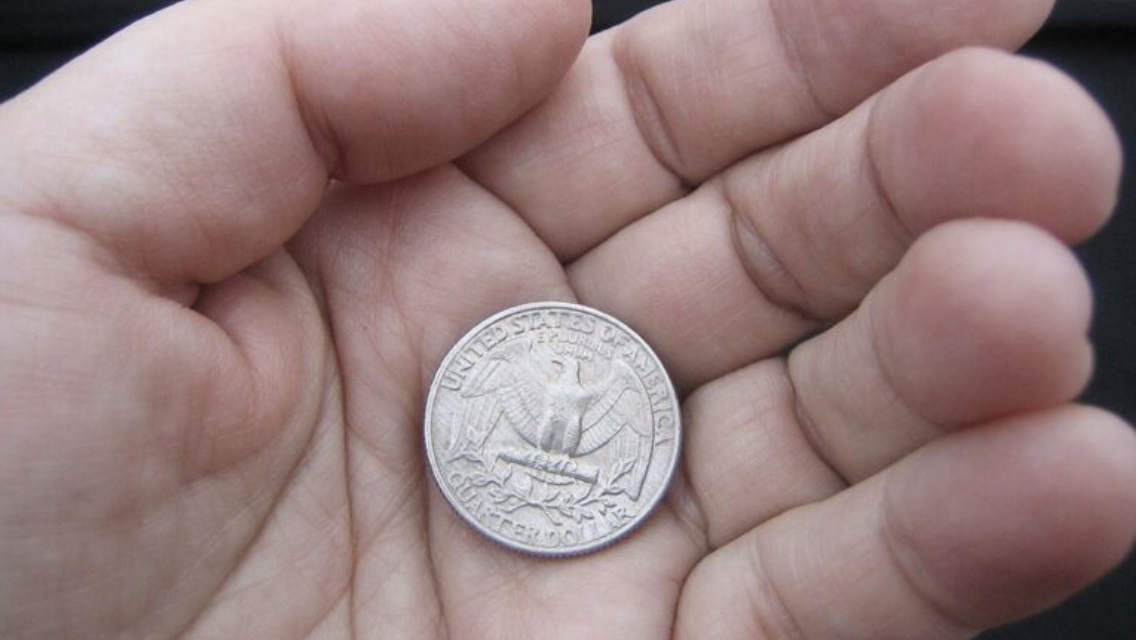
According to the Wadena Pioneer Journal, when Roman soldiers died, they were given a similar honour. It’s also worth noting that the practise hasn’t been limited to fallen service members. Some families have expressed a desire to place change on all of their loved ones’ graves. That could all be attributed to Greek mythology.
The Greek Connection
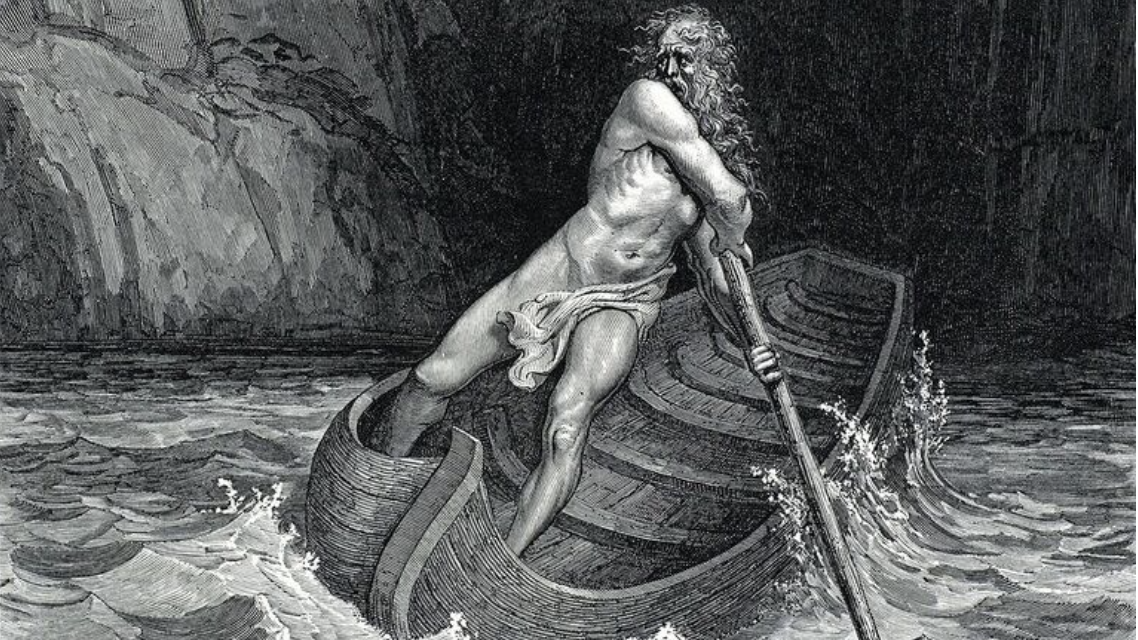
We’ll clear things up if you’ve forgotten a lot since leaving school. The ancient Greeks believed Hades, the Underworld’s ruler, had a boatman named Charon. Charon’s job was to transport the spirits of the dead to the Underworld, and he travelled along the legendary River Styx to do so. However, the journey, like other modes of public transportation, was not free.
Granting Passage
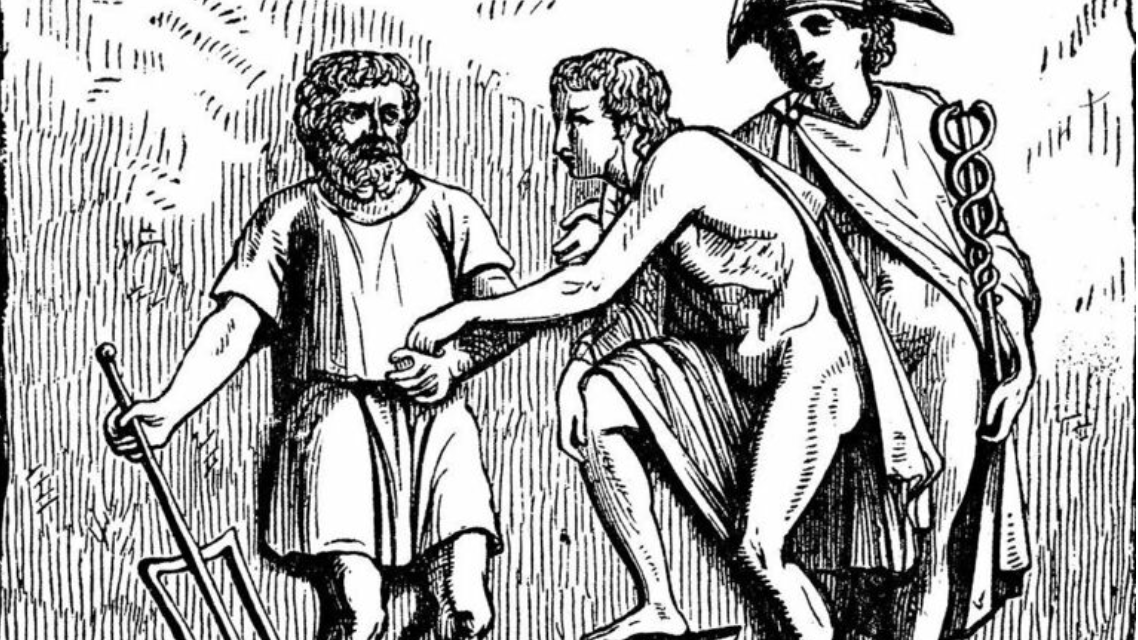
Yes, Charon required coins from the deceased in order to allow them passage. And in ancient times, the required money was either placed in a dead person’s eyes or in their mouth. Without the money, the boatman would reject the spirit and abandon them for a century on the River Styx. Yikes!
Black Donnellys
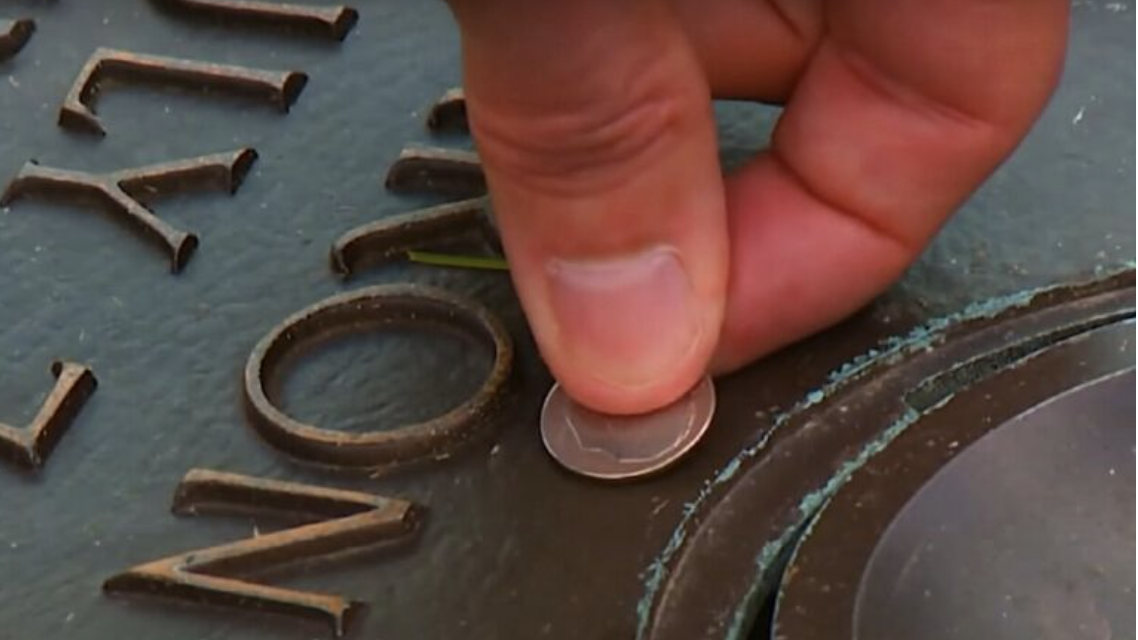
Given the risks, some people did not want to take a chance, so they left coins for their loved ones just in case. Isn’t it fascinating? That is not all. According to the Wadena Pioneer Journal, a family known as the “Black Donnellys” also helped popularise the practise.
Based Out Of Canada
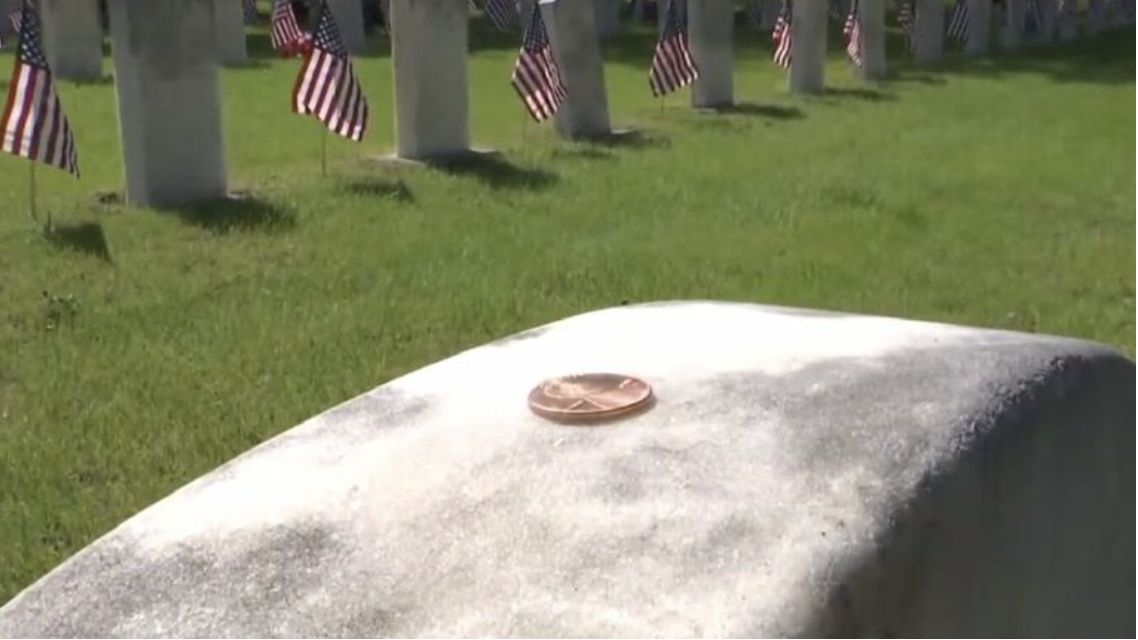
After leaving Ireland in the nineteenth century, this infamous clan ran roughshod over Ontario, Canada. So it’s no surprise that five of the Donnellys were murdered in 1880. And it was said that after these family members were buried, you should drop a coin into their plot and make a wish. If legend is to be believed, your wish was eventually granted as well.
Hoping For The Best
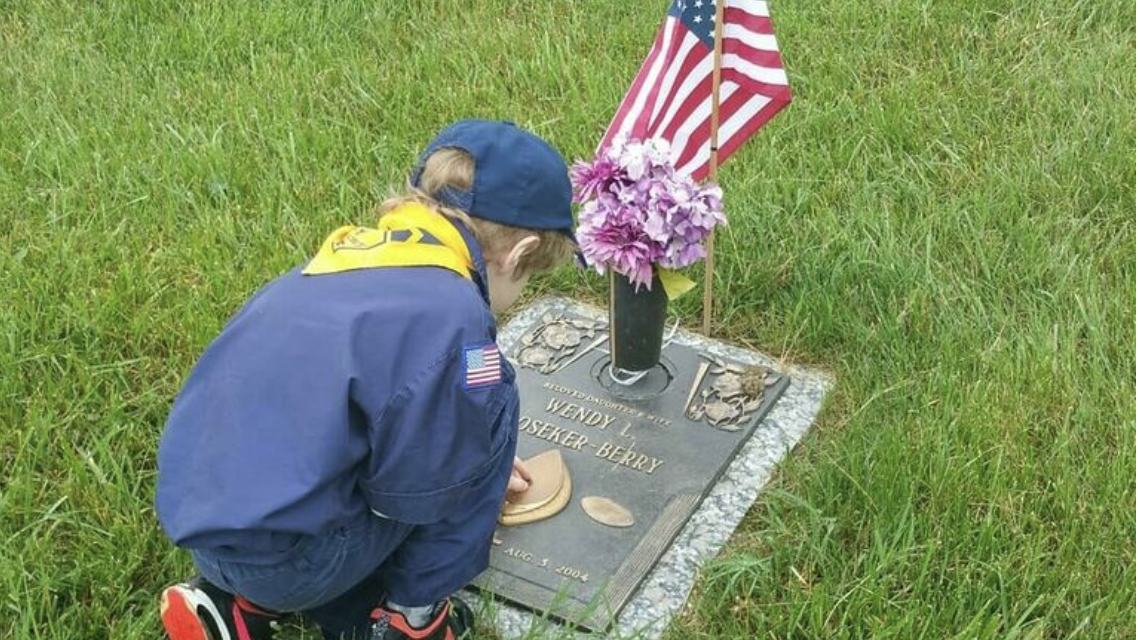
So, others believed that the same thing would happen to their own relatives, which meant that they put money down and hoped for the best. While the reasons for the custom may have changed over the years, the coins can still be found on headstones. A large number of them are also placed on a single occasion.
Memorial Day
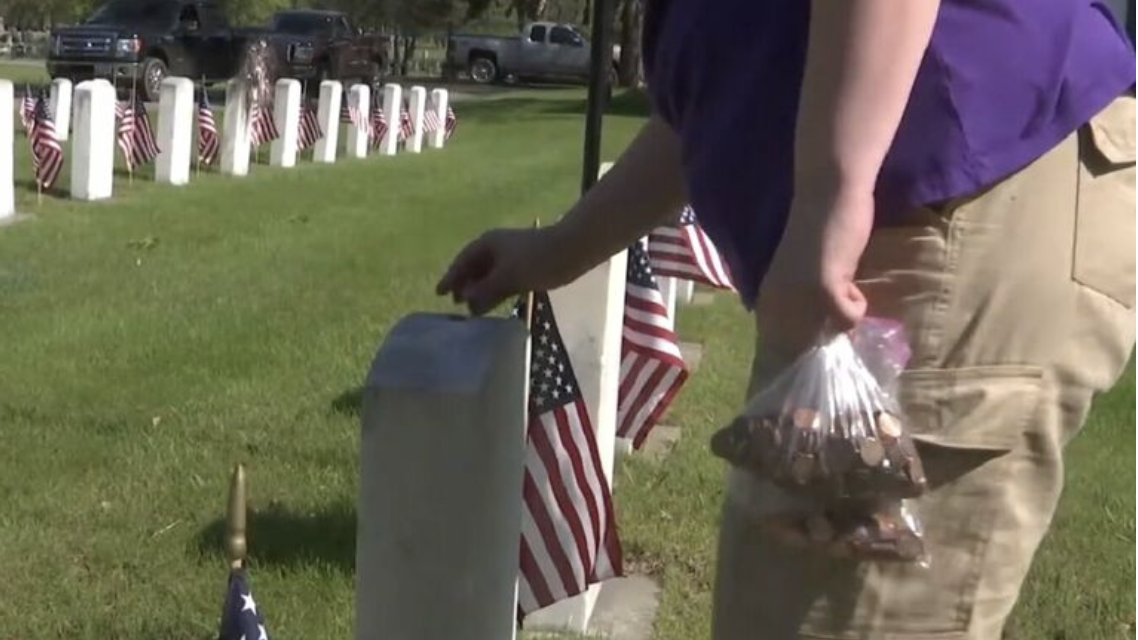
Understandably, many people pay their respects to the fallen on Memorial Day by adding pennies, nickels, dimes, and quarters to plots. And, over time, the coins are collected by the cemetery’s custodian to cover the costs of maintenance, which include everything from cutting the grass to cleaning the tombstones. A thoughtful gesture can go a long way.
Bright Green Light
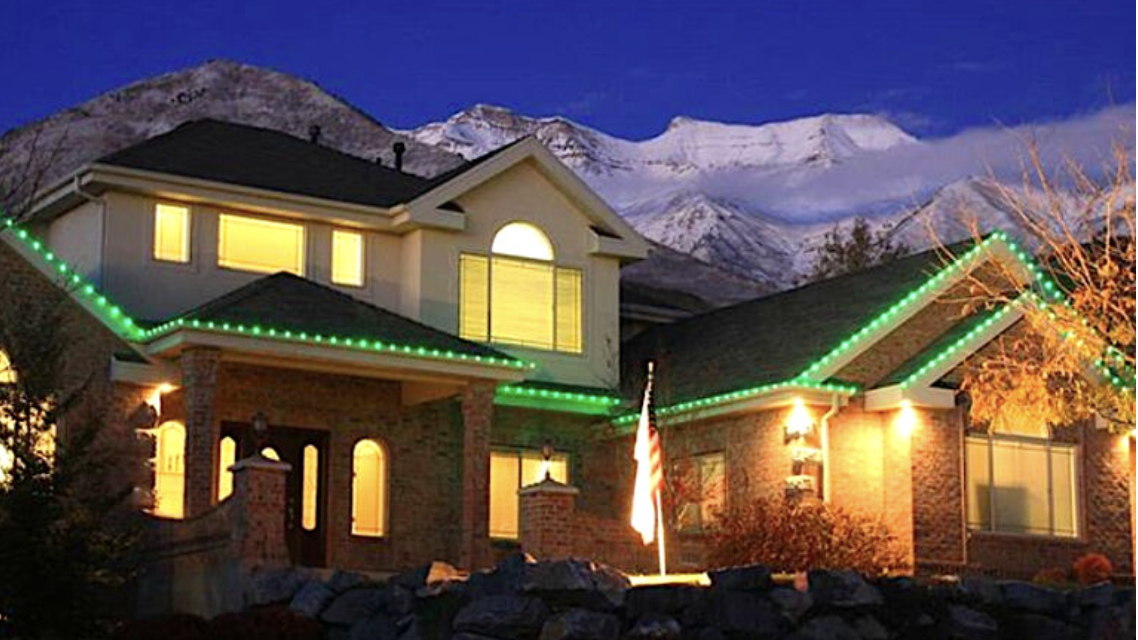
But what if you’re out for an evening stroll through the neighbourhood when you notice a green light emanating from someone’s porch? It’s colourful and eye-catching, but it has nothing to do with Christmas. It also has nothing to do with Halloween. What’s going on? The reason why people have chosen to light their homes in this colour is truly poignant. Indeed, it may simply leave you with a tear in your eye.
The Most Obvious Color

It’s safe to say that green isn’t the most obvious colour to use to illuminate your home. If you saw a house bathed in verdant light, you’d be forgiven for thinking the ghoulish hue was intended to attract trick-or-treaters. However, as previously stated, you would be mistaken.
Special Meaning
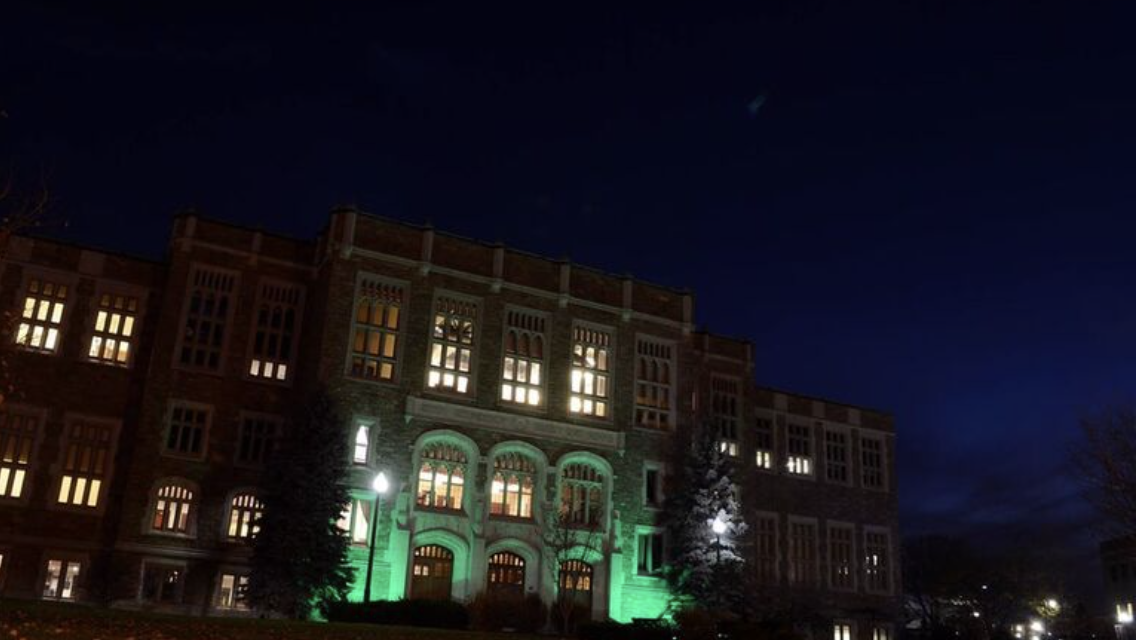
Since 2015, a campaign has been attempting to give the green light a new meaning. More specifically, the goal is to use the colour to show support for a specific segment of society. People are also encouraged to put green lights on their porches and try to persuade their friends and family to do the same.
Changing One Color
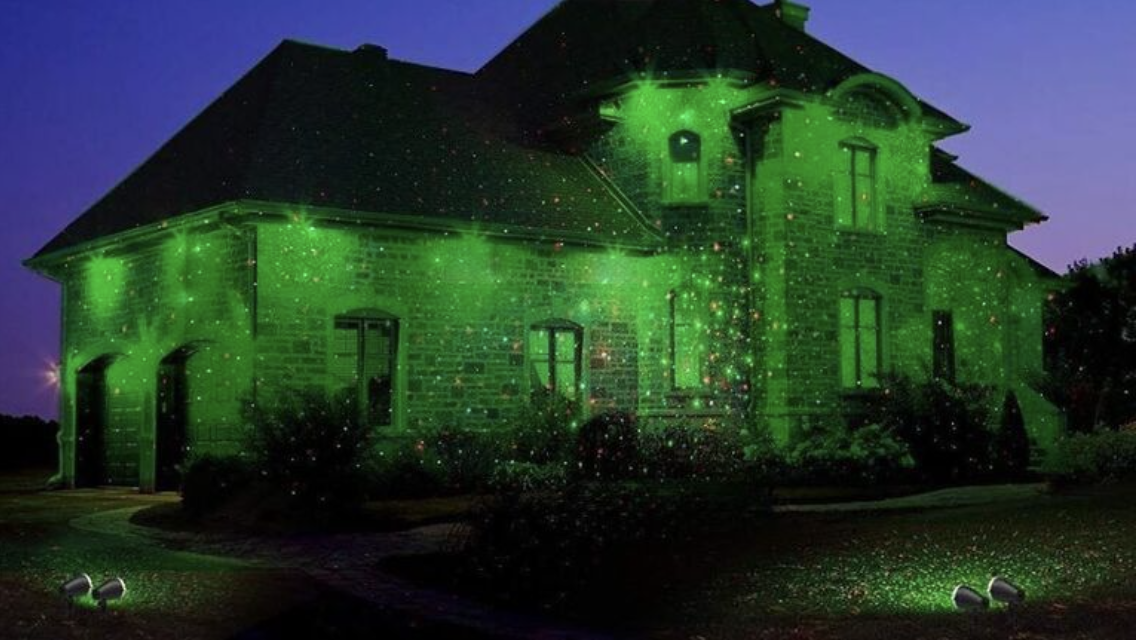
An excerpt from a website created to promote the green light campaign informs readers about how they, too, can get involved. Yes, it encourages people to “change one visible light in [their] home or office to green.” It then encourages people to leave the emerald light on all day – for a full 24 hours.
Inspiring Others
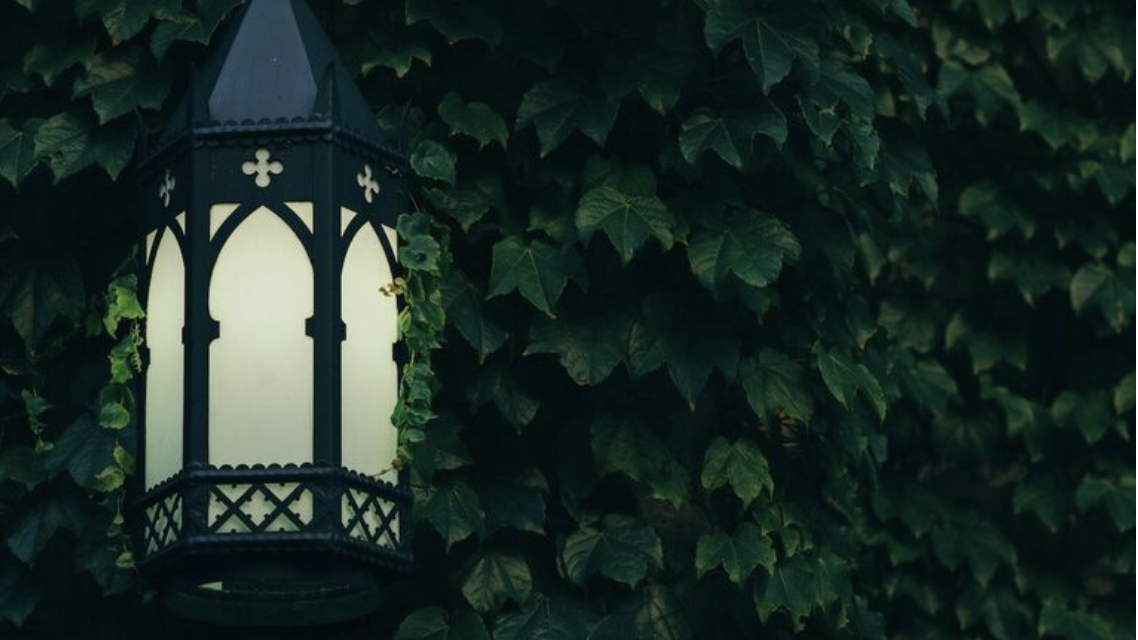
Furthermore, in addition to asking participants to display the correct-colored lamp, those behind the campaign want participants to spread the word about what they are doing. “Inspire others to join the cause by taking a picture of your green light and sharing it on social media,” their website says. Another extract then asks people to log their efforts on maps, which allows them to see how many people are participating as well as how far the participation is spread across the country.
Catching On
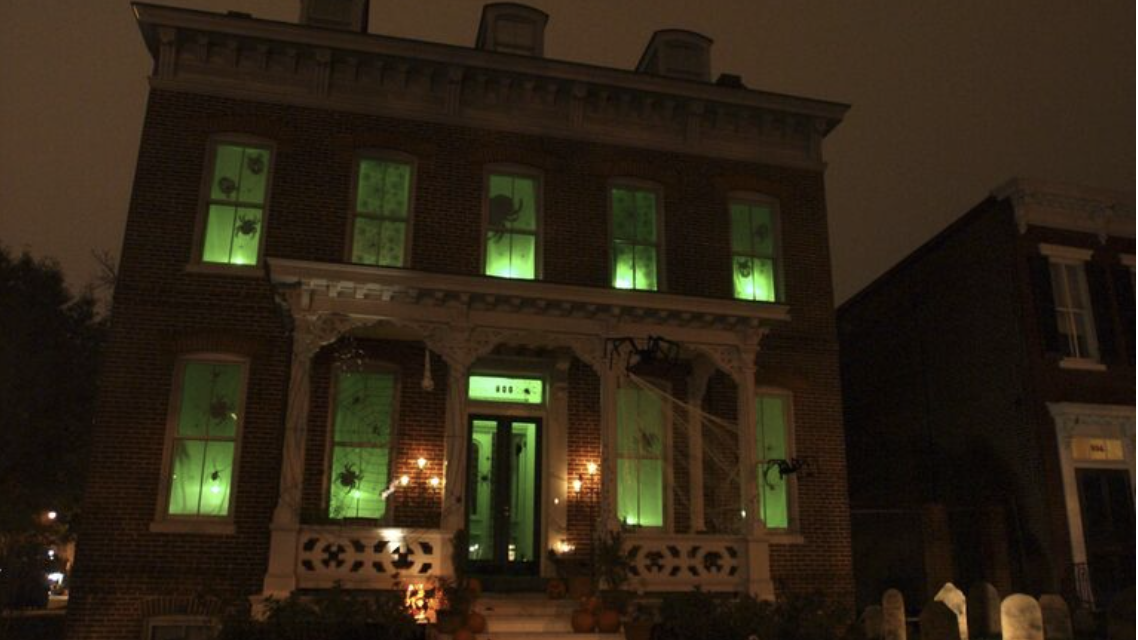
As it turns out, the concept has apparently caught on. Many people have gotten involved over the years, installing green lights of various shapes and sizes in front of their homes. Some people kept their displays understated, with only one emerald-colored lantern. Others, on the other hand, went all out, lighting up their entire homes in the grassy hue.
Online Acts Of Support

Participants shared photos of their efforts on social media as the campaign grew. Many of the images ended up on a dedicated Facebook page, which had over 27,000 likes as of November 2019. Meanwhile, the map depicting the location of the green lights revealed more than nine million “online acts of support” from across the country.
Harnessing The Power Of Social Media
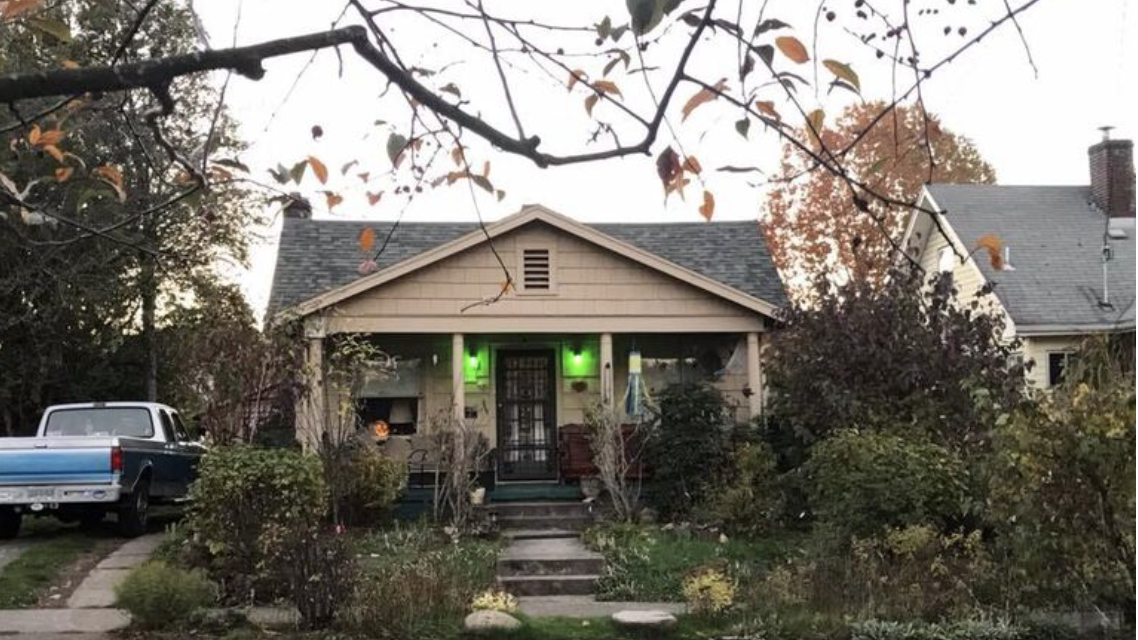
Of course, the green light campaign isn’t the first time a non-profit has used social media to raise awareness for a worthy cause. That’s right, a number of charity movements have gone viral in recent years. All they had to do, you see, was capture the public’s imagination and inspire them to participate.
The Viral Moment
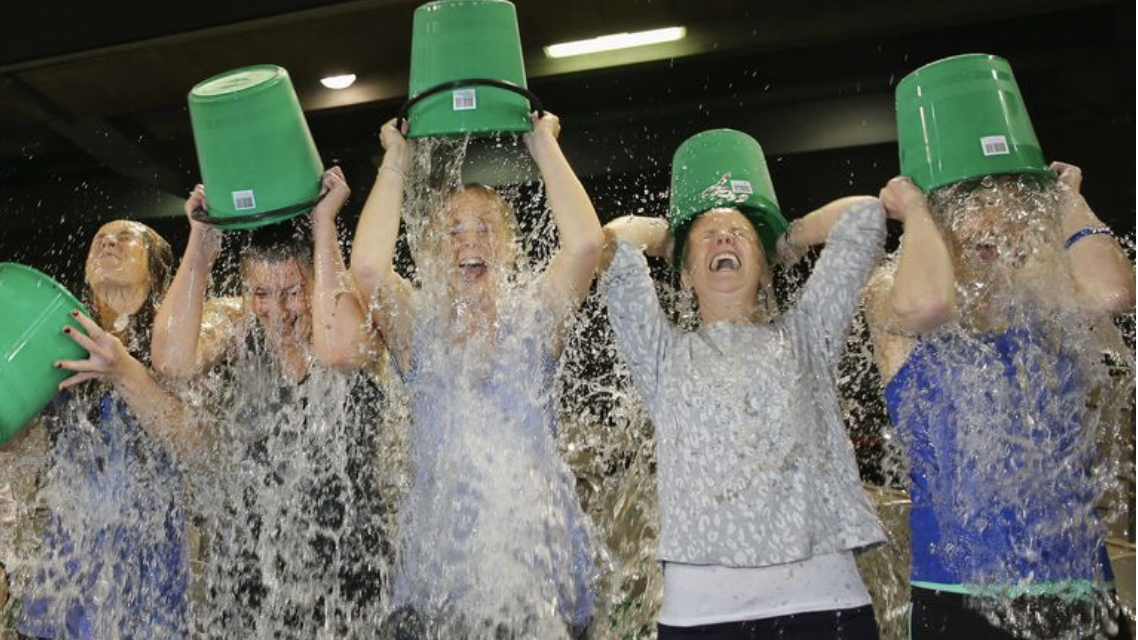
The Ice Bucket Challenge from 2014 was one such viral moment, and as you may recall, it took the internet by storm. The activity, as the name implies, required participants to douse themselves in icy water while being filmed. Following their soak, they would upload the video to social media and invite others to join them.
The Ice Bucket Challenge
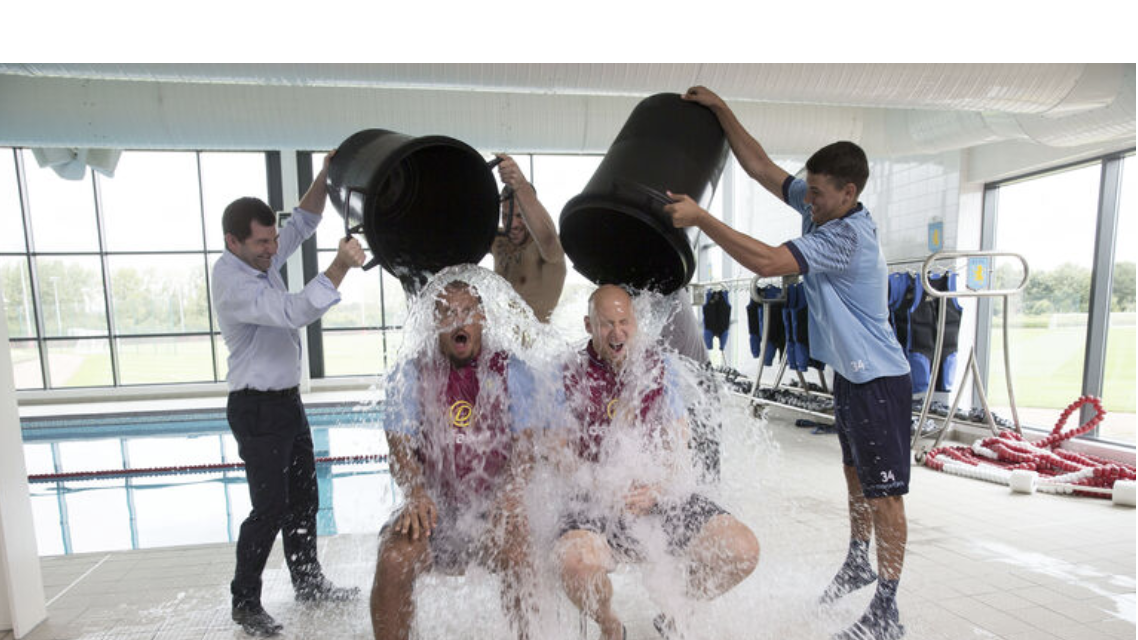
But what exactly was the point of the Ice Bucket Challenge? It was intended to raise awareness of ALS, also known as Lou Gehrig’s disease. In July 2014, the activity began to receive widespread coverage, and it quickly gained viral status. In fact, 17 million ALS Ice Bucket Challenge videos were shared on Facebook in September 2014 alone.
Famous Names
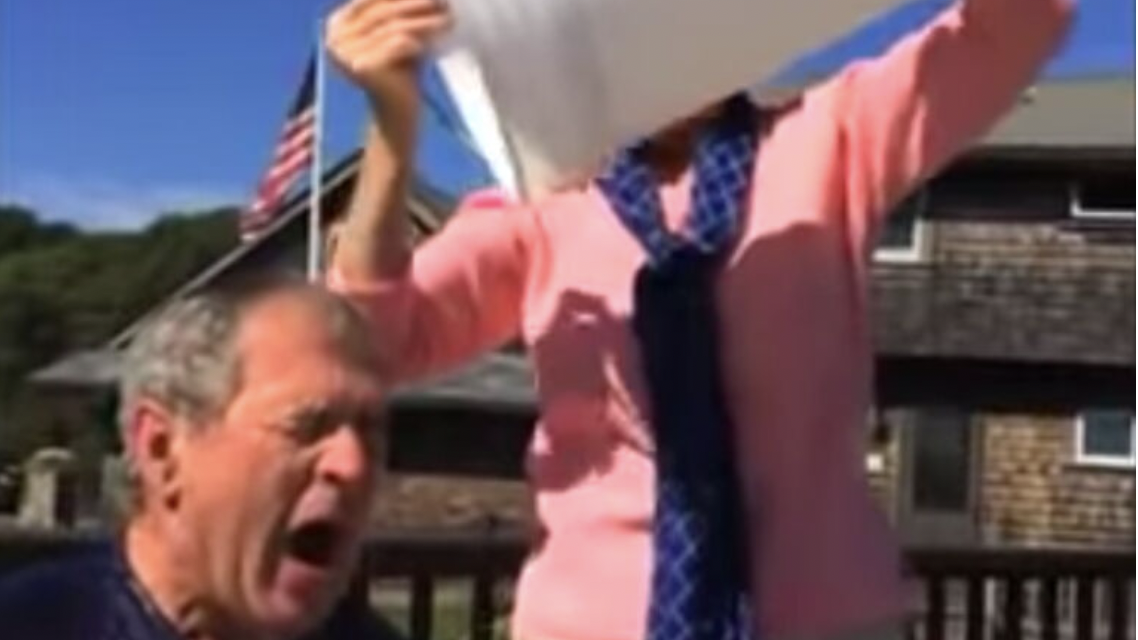
The campaign was so successful that it drew a number of high-profile participants. That’s right, celebrities like Jimmy Fallon, Lady Gaga, and Oprah Winfrey, as well as former US President George W. Bush, all took the Ice Bucket Challenge. Barack Obama, the president at the time, was also nominated. Despite ultimately declining to participate, he did donate $100 to the cause.
A Success
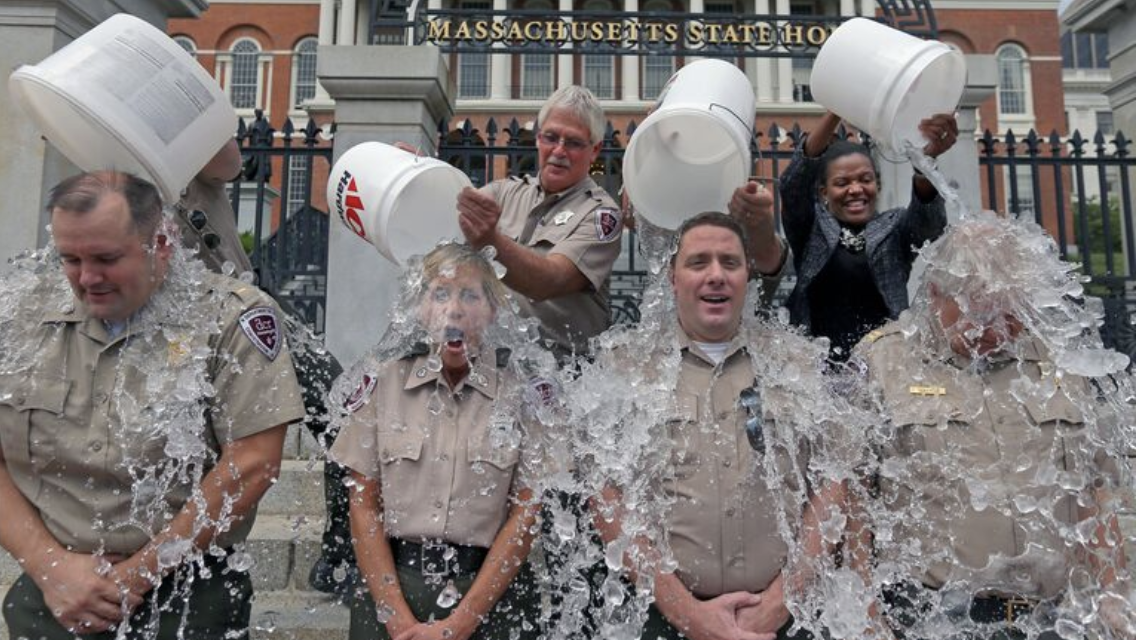
The Ice Bucket Challenge’s success was also significant for a number of Lou Gehrig’s disease charities. In 2014, for example, the ALS Association received $115 million in donations in just eight weeks. Furthermore, the majority of the funds raised were used to fund neurological disease research.
Replicating The Success

Given the positive impact of the campaign, the ALS Association was eager to repeat its success the following year. However, the campaign did not succeed a second time. “I think we learned you can’t capture lightning in a bottle twice,” Brian Frederick, executive vice president of communications and development for the ALS Association, told Mashable in 2017.
The Foundation
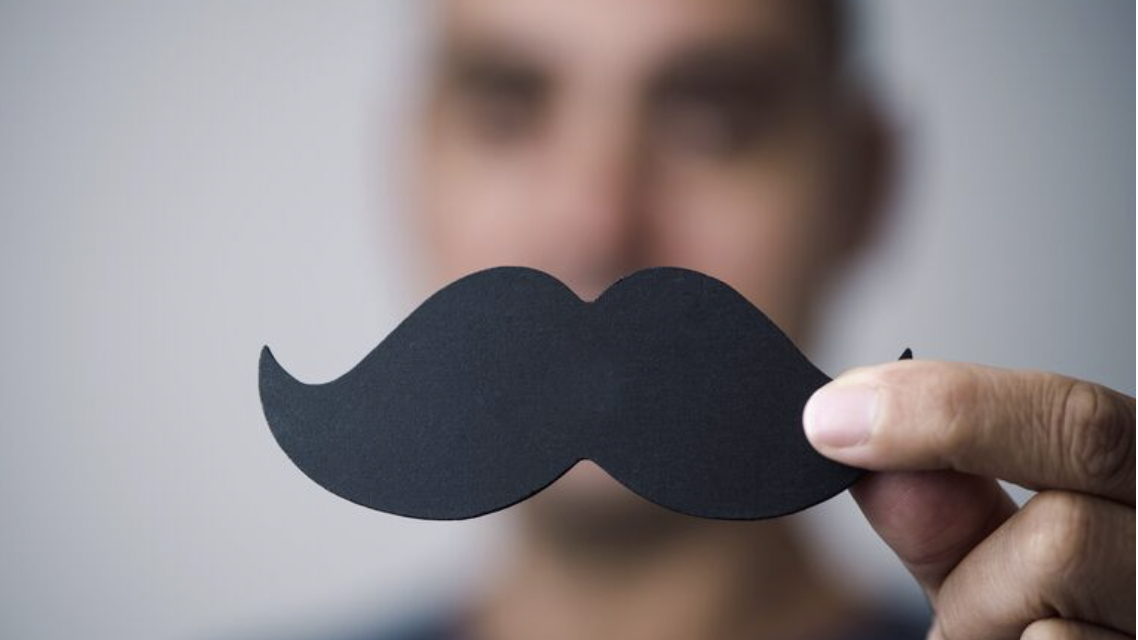
However, one non-profit campaign that has endured year after year is Movember. Friends Luke Slattery and Travis Garone founded the movement in Melbourne, Australia, in 2003. Initially, these two men had much simpler goals: they simply wanted to reintroduce the moustache into the public eye.
The Brainwave
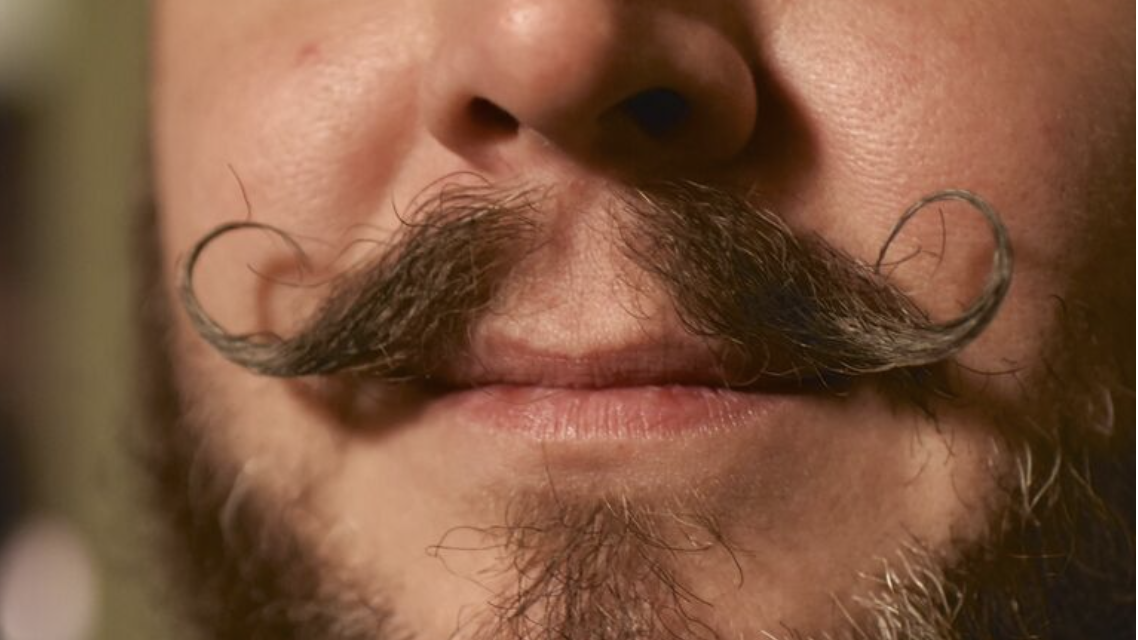
But Slattery and Garone had a lightbulb moment when they decided to make the humble ‘tache a symbol of men’s health awareness. The Movember campaign, in particular, was created to shed light on male cancers and mental health. And, as the name implies, all participants had to do was raise money by sporting a moustache for the entire month of November.
Movember
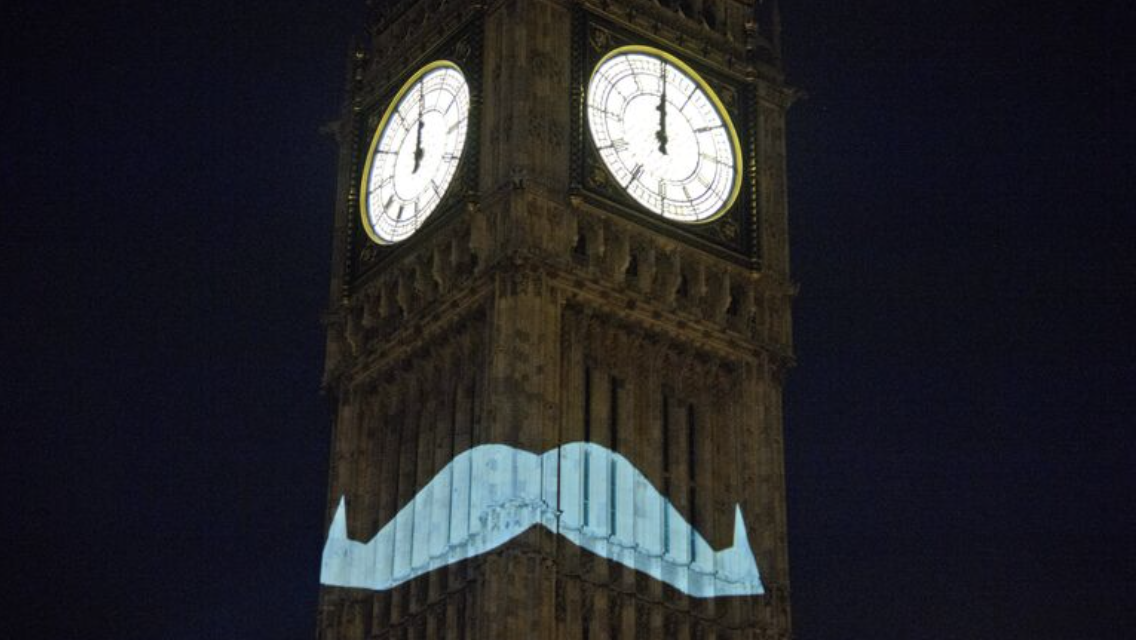
Movember has reportedly grown year after year since its inception. In its first year, for example, only 30 people participated. However, the following year, this figure skyrocketed, with 480 people raising more than $40,000 for men’s health initiatives. In 2010, over a million people reportedly participated in Movember in 11 different countries.
Celebrities Joined In
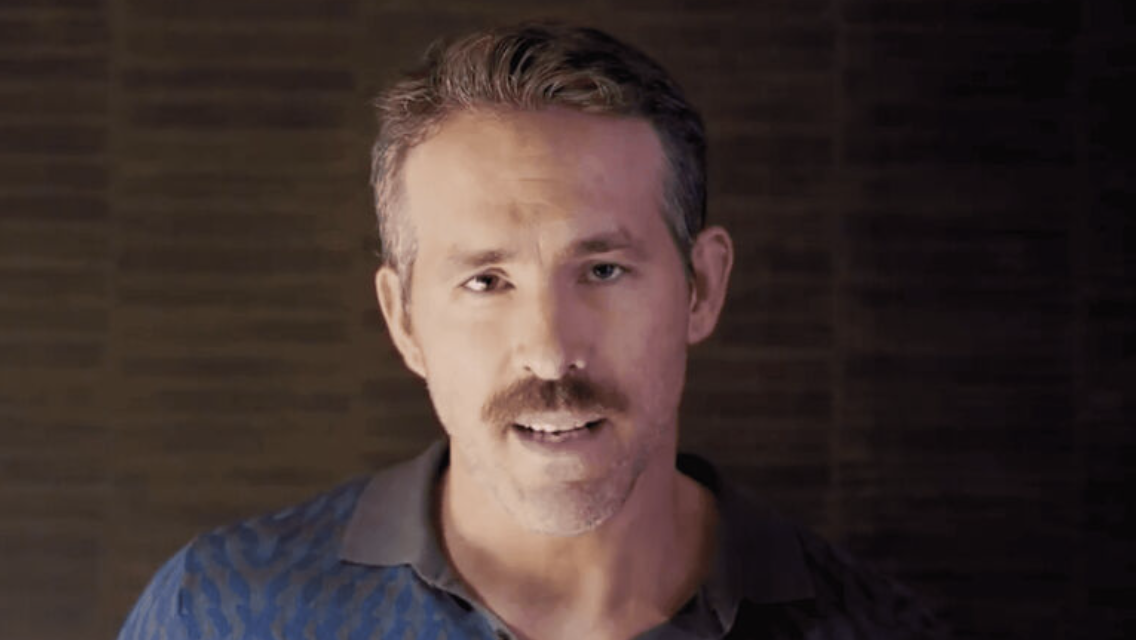
Movember, like the Ice Bucket Challenge, has attracted celebrity supporters over the years. These celebrities include Ryan Reynolds, Chris Hemsworth, and David Beckham, who all proudly promoted the campaign on their own faces. They could also encourage even more people to participate by using social media.
#NoMakeUpSelfie
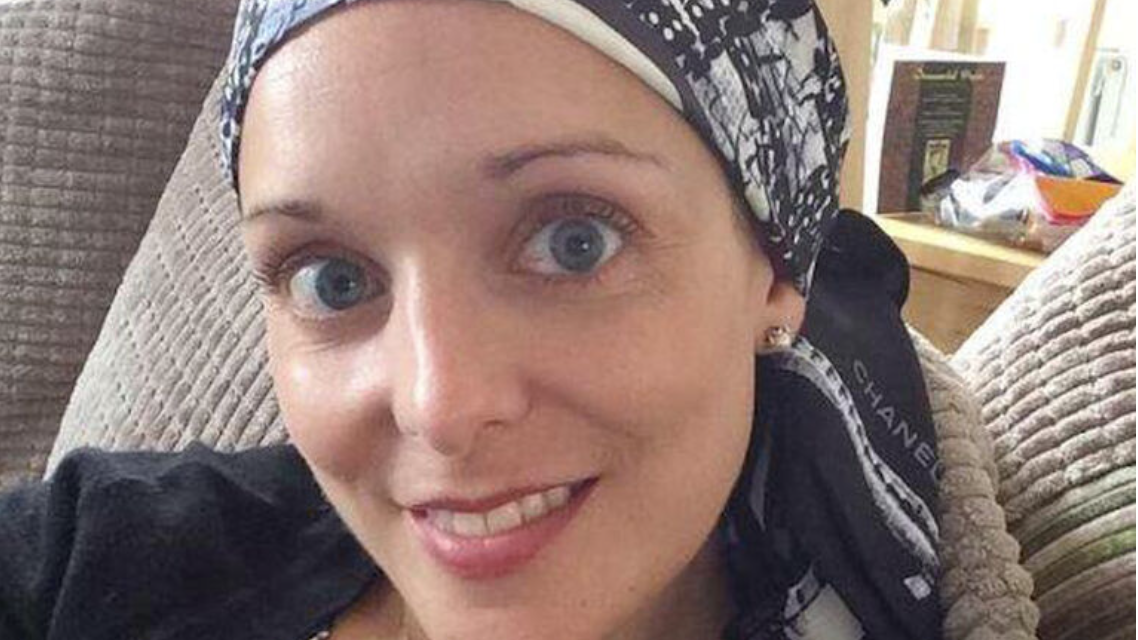
Another celebrity-backed viral charity campaign was the #NoMakeUpSelfie movement in support of cancer research. This trend began in the United Kingdom, but it quickly attracted some of Hollywood’s most famous faces. And they were more than willing to risk everything to bring attention to the cause.
Come On Ladies
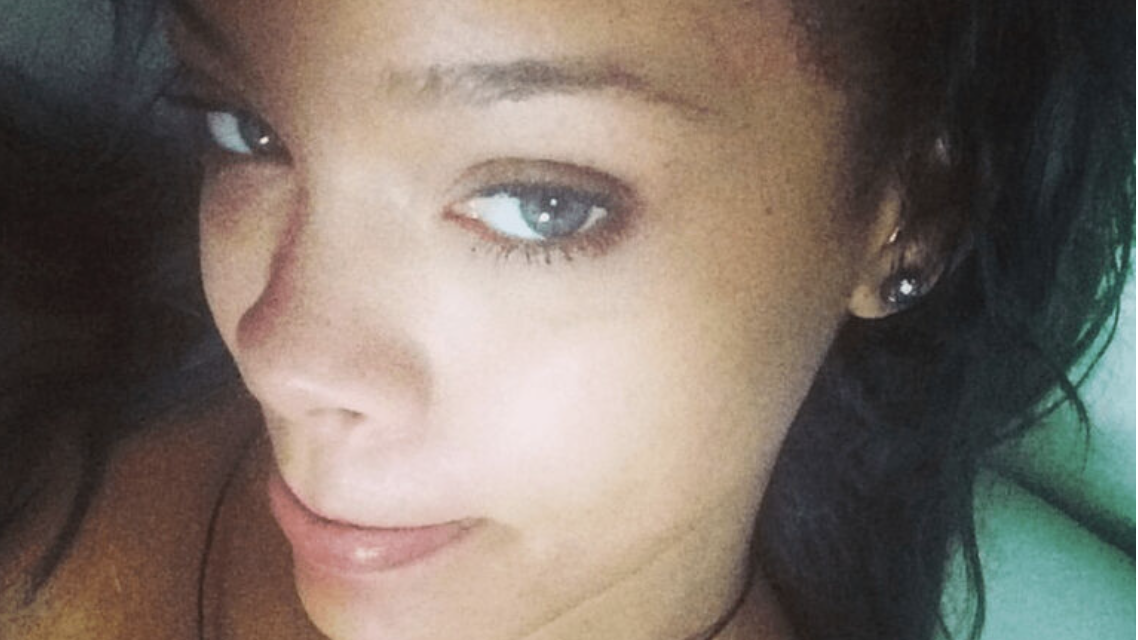
Celebrities such as Rihanna, Beyoncé, and Cara Delevingne were among the women who participated in the #NoMakeUpSelfie campaign. They, like hundreds of other people, took to social media to post a photo of themselves in their natural state. And as a result of the increased awareness, the UK charity Cancer Research received millions of pounds in donations.
Harpal Kumar
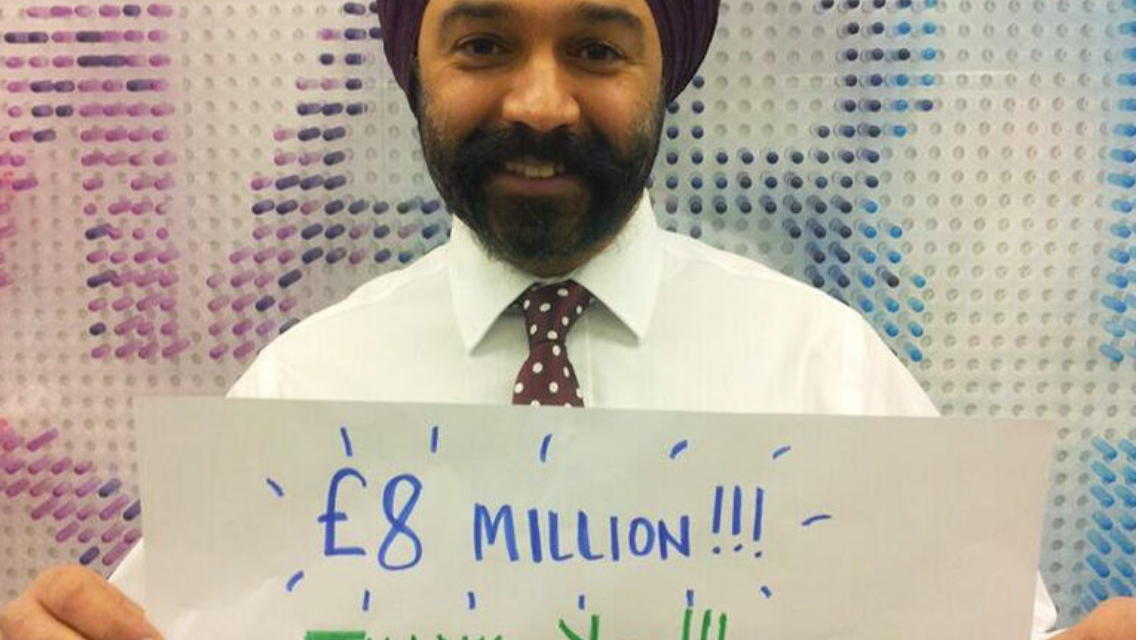
Harpal Kumar, the chief executive of Cancer Research U.K., issued a statement to the Press Association following the success of the #NoMakeUpSelfie trend in 2014. In it, he expressed the group’s surprise at how much public support the initiative received. “We have been overwhelmed by the support people have shown us through the #nomakeupselfie trend,” he said.
Phenomenal
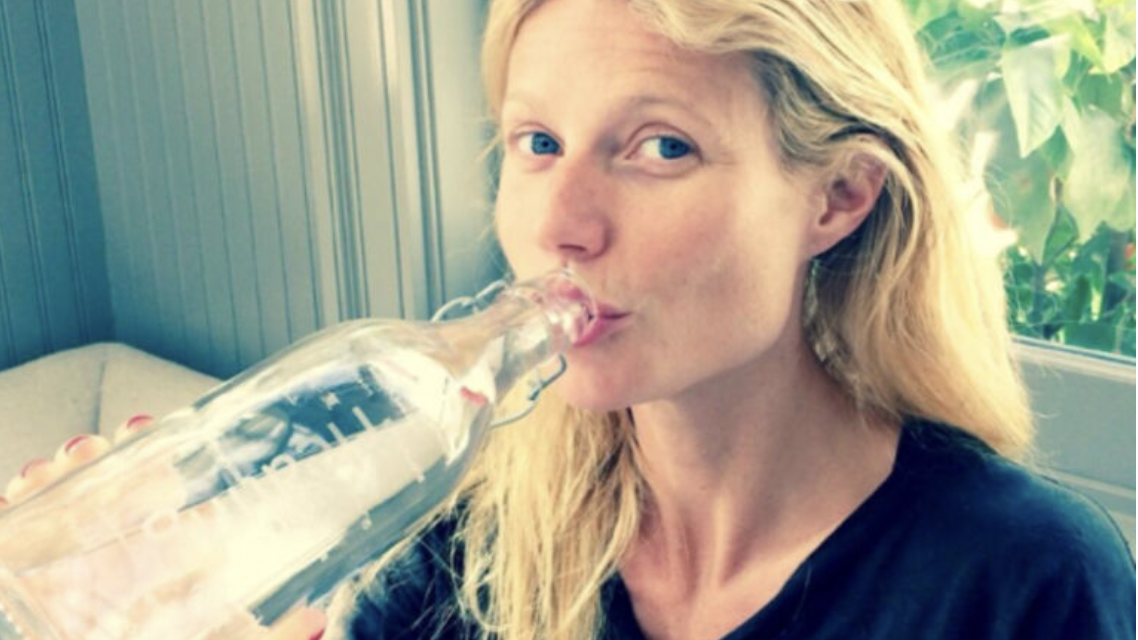
“We don’t get any government funding for our research,” Kumar continued. So it’s incredible to think that the generosity of the public is allowing us to fund critical research that we couldn’t afford six days ago… It’s been an exciting week, and we’d like to thank everyone for their help once more.”
The Beauty
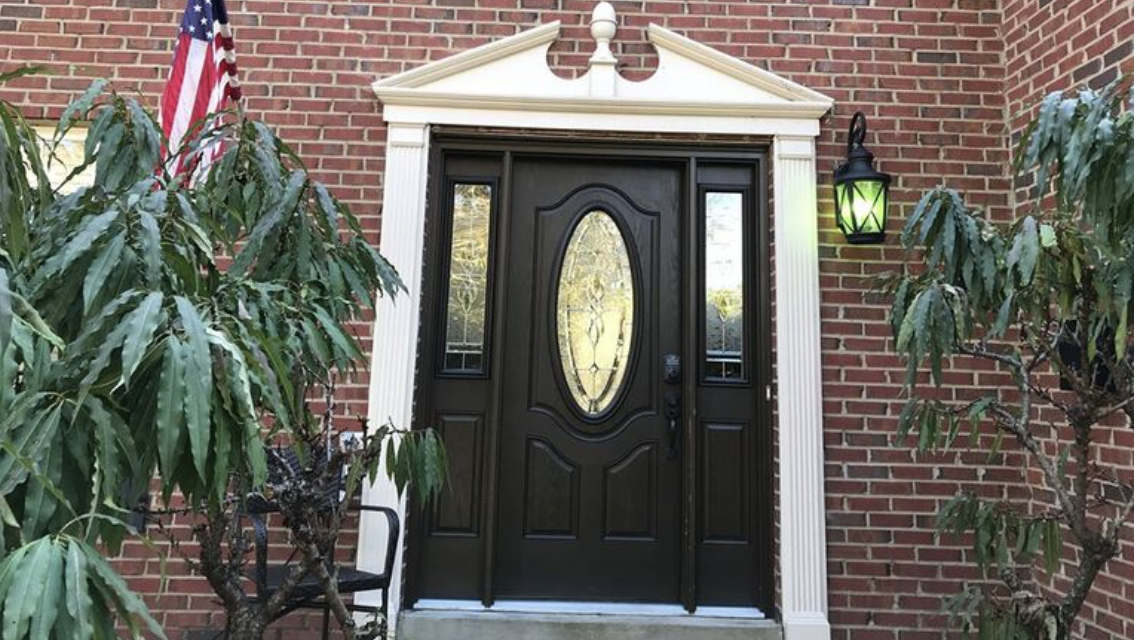
One of the most appealing aspects of viral, non-profit campaigns is their ability to restore our collective faith in human kindness. When current events stories appear to address somewhat depressing topics, they can provide society with something to cheer about if they are timed correctly. And the green light campaign is not an exception.
Goodwill Of People
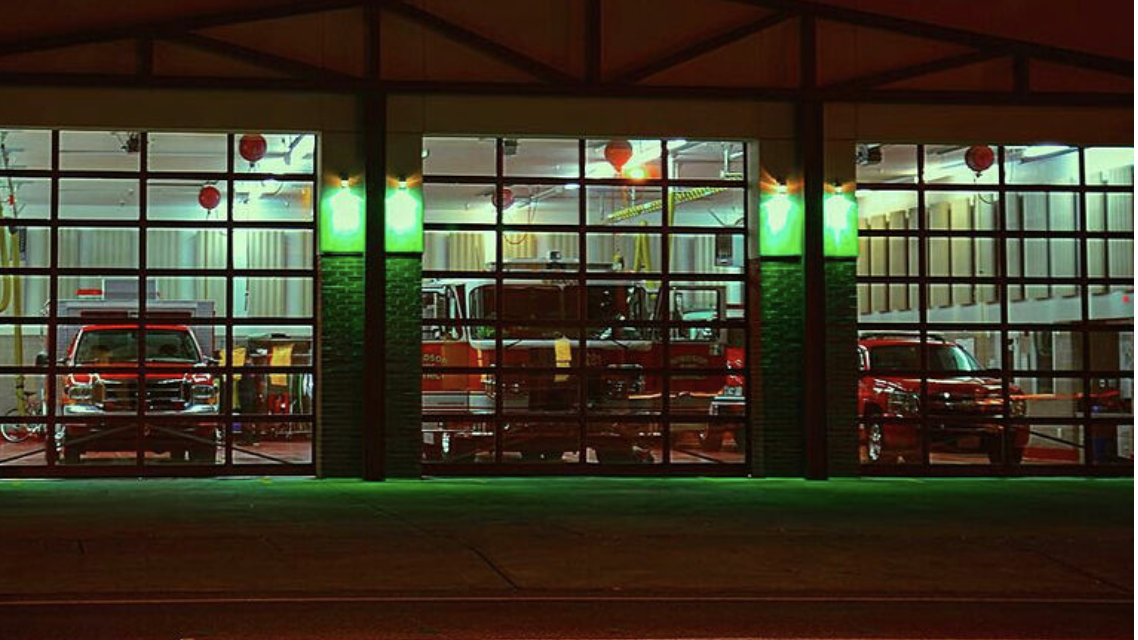
The green light movement, like the Ice Bucket Challenge and Movember before it, is based on the goodwill of ordinary people. It encourages people to get involved and share their efforts online by drawing inspiration from their friends, families, and neighbours. In this way, they can participate in the viral revolution while also raising awareness of a worthy cause.
Vet Campaign
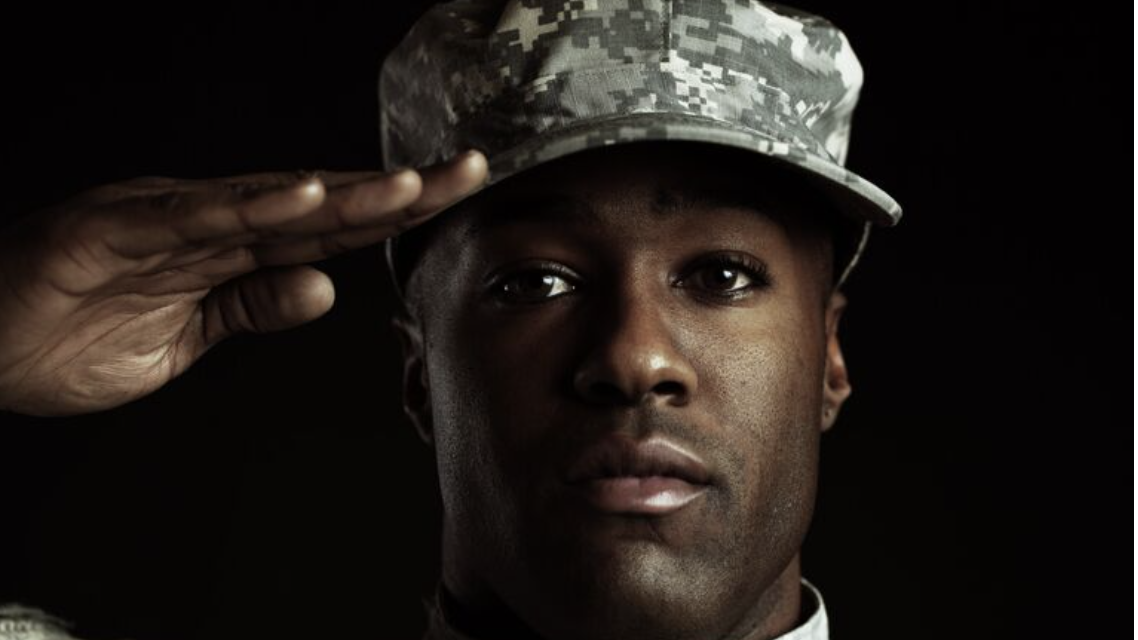
But what is the green light movement all about? The Green Light a Vet campaign, to give it its proper name, aims to raise awareness of veterans and show appreciation for the sacrifices they make for their country. And, as you may have guessed, all people have to do to participate is change the colour of one of their light bulbs.
The Retail Chains
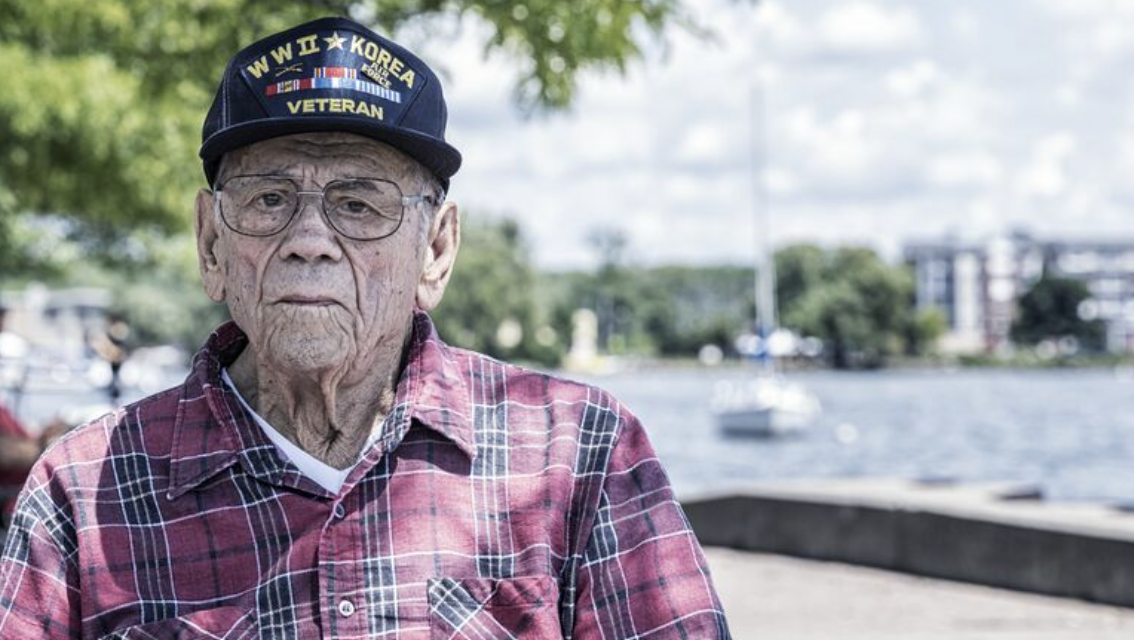
The Green Light a Vet campaign’s organisers include companies like the retail giant Walmart. The initiative as a whole seeks to convey to military personnel that their service is highly valued. Neighborhoods can express their gratitude without saying anything; all they have to do is flip a switch.
Launching It On Veterans Day

In 2015, the Green Light a Vet campaign was launched to coincide with Veterans Day. The significance of the initiative was revealed in a statement issued by the Walmart Foundation at the time. “A green light means go, and that’s what veterans are known for – their ability to act quickly no matter the challenge,” it said.
Green Light
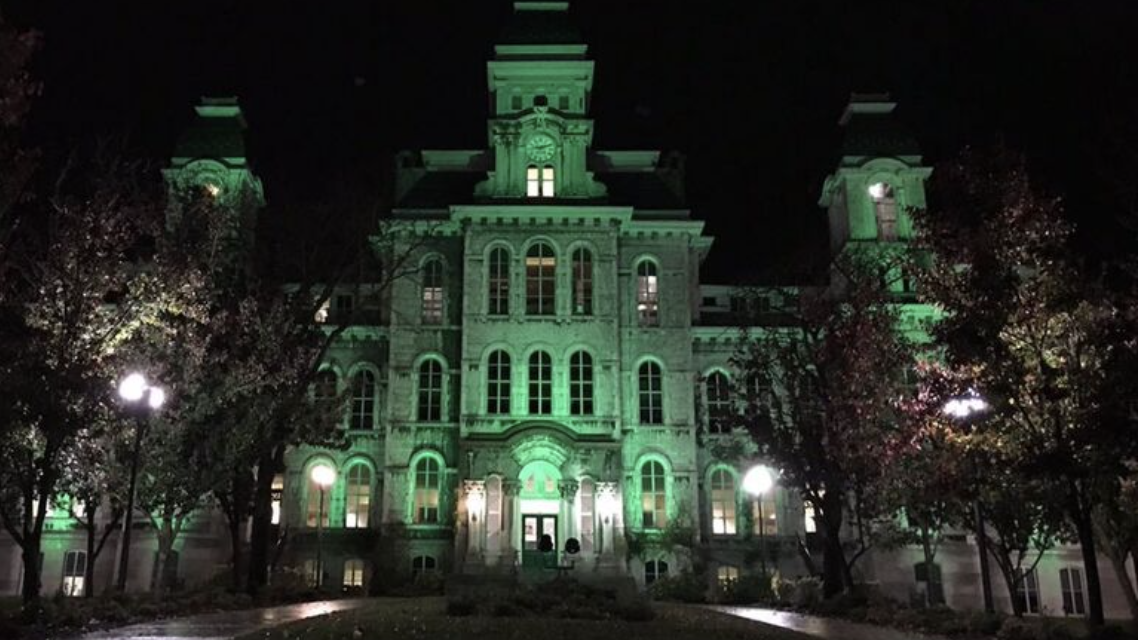
Meanwhile, according to an excerpt from the Green Light a Vet Facebook page, “green is the colour of hope, renewal, and well-being.” The term ‘Green Light’ is also commonly used to activate forward movement.” That’s why the lush green was chosen as the best colour to “shed light on America’s veterans.”
Gary Profit

Gary Profit is a retired brigadier general who now works as Walmart’s senior director of military programmes. In a 2015 interview with TheBlaze, he explained what the Green Light a Vet campaign meant to him specifically. “I hope it symbolises what I have felt certainly since 9/11,” Profit said.
Honoring The Service
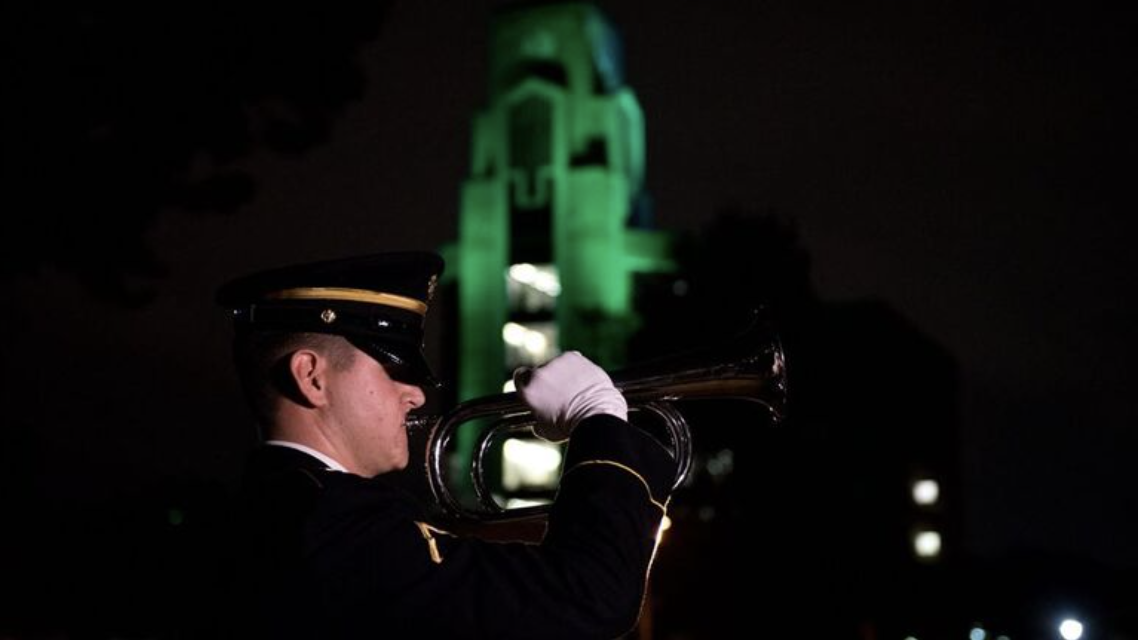
Profit then explained what he meant by that statement. “Whether one agrees with the decisions to do things from a national security standpoint, there is this universal sense that we should honour the service and respect the sacrifice of those who have worn the nation’s uniform and the families who have supported them,” he said.
Millions Of People Pledged In

Within weeks of the campaign’s launch in 2015, 1.5 million people had pledged to participate. Many of those who pledged their support used the hashtag “greenlightavet” to share their efforts on social media. Blue Star Families CEO Kathy Roth-Douquet told TheBlaze she was “thrilled” by the response.
Blue Star Families
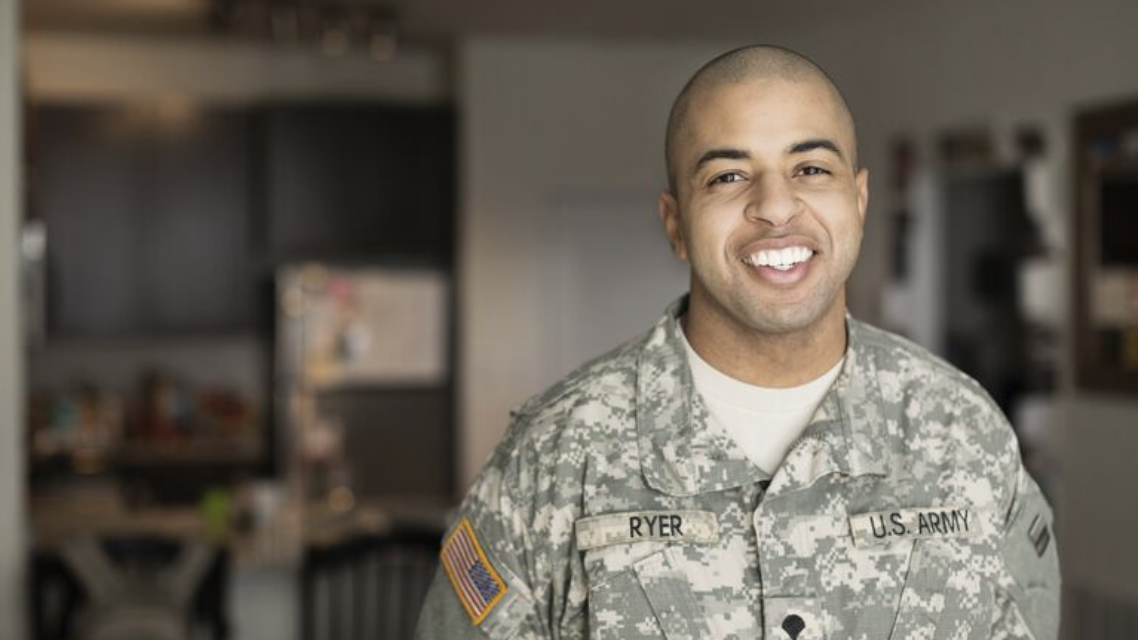
Blue Star Families is a non-profit organisation founded in August 2009 by military spouses. It aims to assist military families while also raising awareness of the difficulties they frequently face. As a result, it is a natural fit for the Green Light a Vet campaign.
Establishing Roots
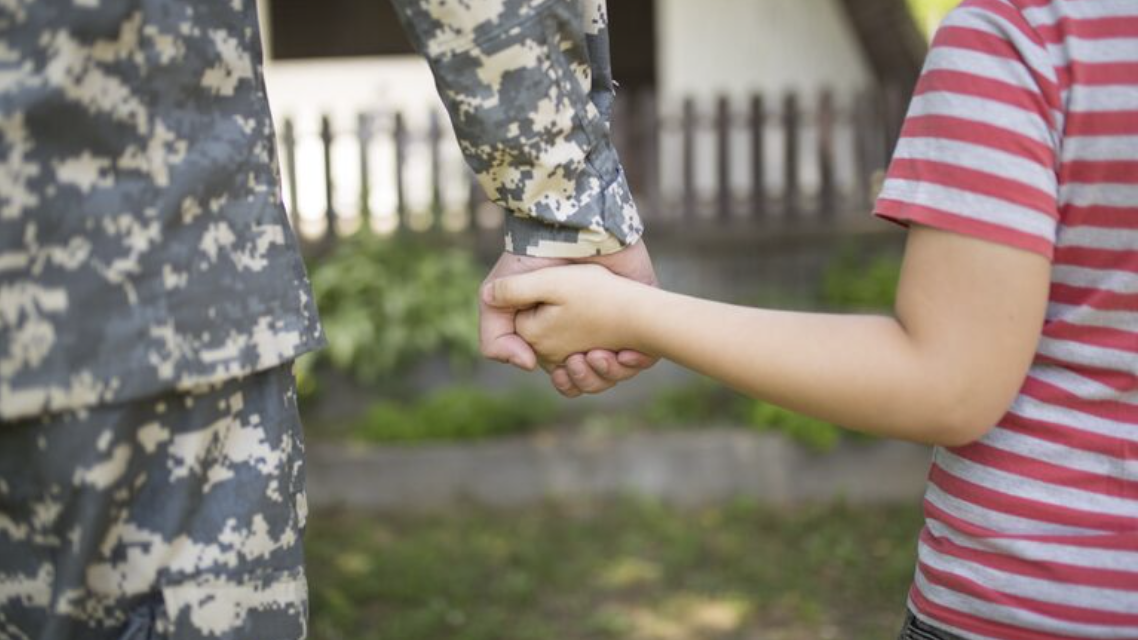
One difficulty that service members face is establishing roots with their families. This is due to the fact that their job requires them to move frequently. Roth-Douquet, on the other hand, hoped that the Green Light a Vet campaign would help them feel more connected. “We believe this initiative is very important,” she told TheBlaze. Military families value their service to the country, but they can feel isolated from their peers.”
Beautiful Way To Communicate
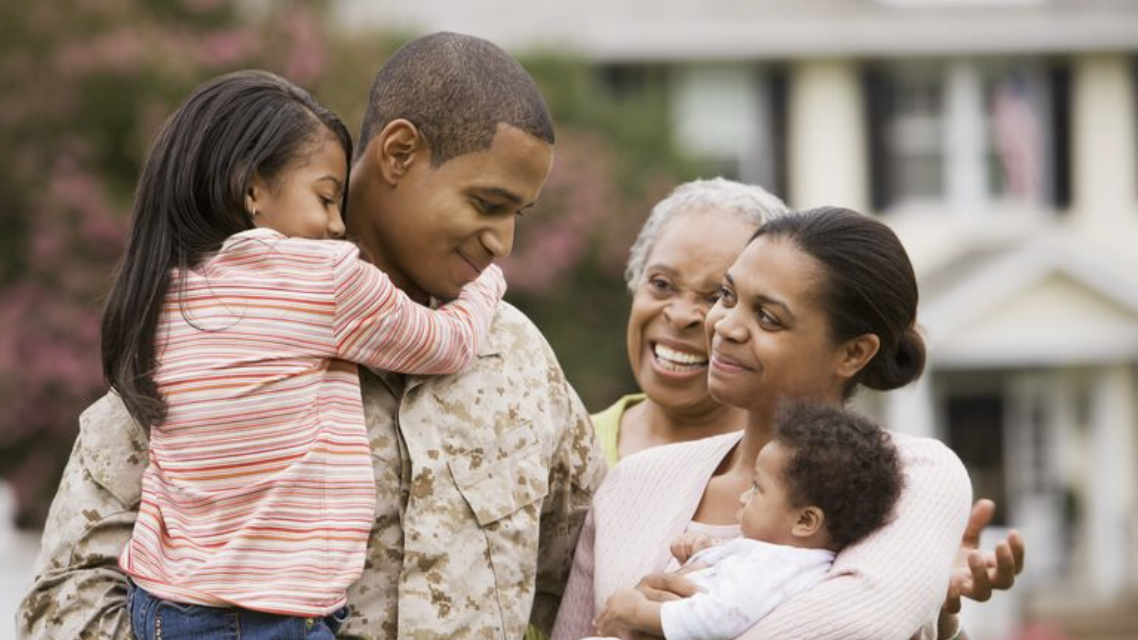
“You can’t know your neighbours, and it’s easy to not know whether your neighbours are aware of the hard work that you’re doing,” Roth-Douquet continued. This green light initiative, in my opinion, is an excellent way to accomplish this. Green lights adorn the porches, and it’s a wonderful visual reminder that people are aware of your presence and care.”
Not The Only Way
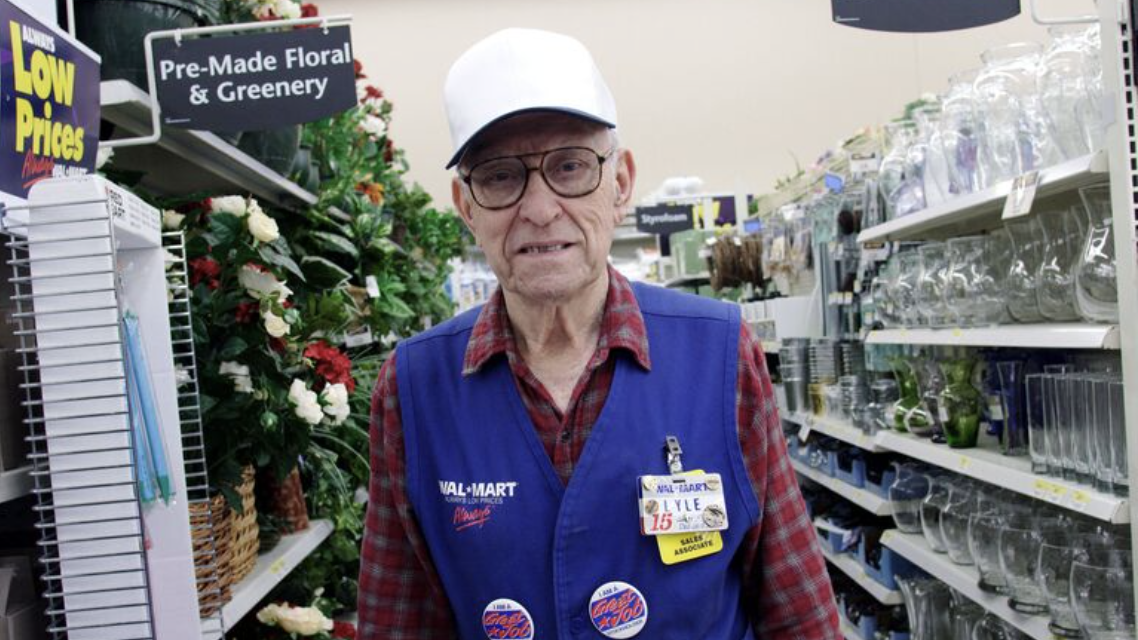
Furthermore, Walmart’s pledge to partner with the Green Light a Vet campaign isn’t the only way the company communicates with military personnel. Yes, the retailer encourages businesses to hire veterans or their spouses in order to make civilian life easier for them. The difficulties of military life often mean that the partners of service personnel struggle to find work.
TheBlaze

Roth-Douquet expanded on this concept for TheBlaze. “With the way they’re moving, it’s very difficult for the non-military member to keep working,” she explained. We can remember to include the person who serves in addition to the one in uniform, to acknowledge them, and to assist them in finding work.”
Sharing The Same Belief

Gary Profit appears to hold a similar viewpoint. He agrees that society needs to better understand the challenges that many military personnel face. “We believe that the campaign is entirely intended to spark a movement where we change the dialogue in our communities to one that recognises the value of veterans and their families,” he said of Green Light a Vet.
Gaining Traction
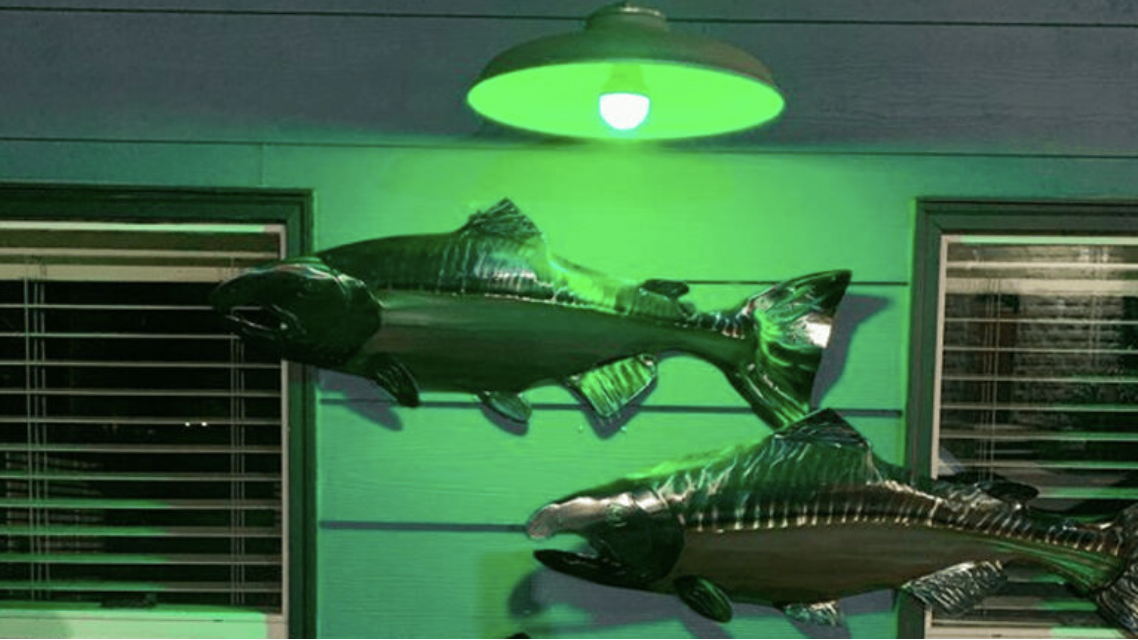
Four years after its inception, the Green Light a Vet campaign appears to be gaining traction. People show their support for the initiative by posting photos of their emerald-colored lanterns on social media. Along with their snaps, many of them write heartfelt tributes to the military.
The Instagram Post
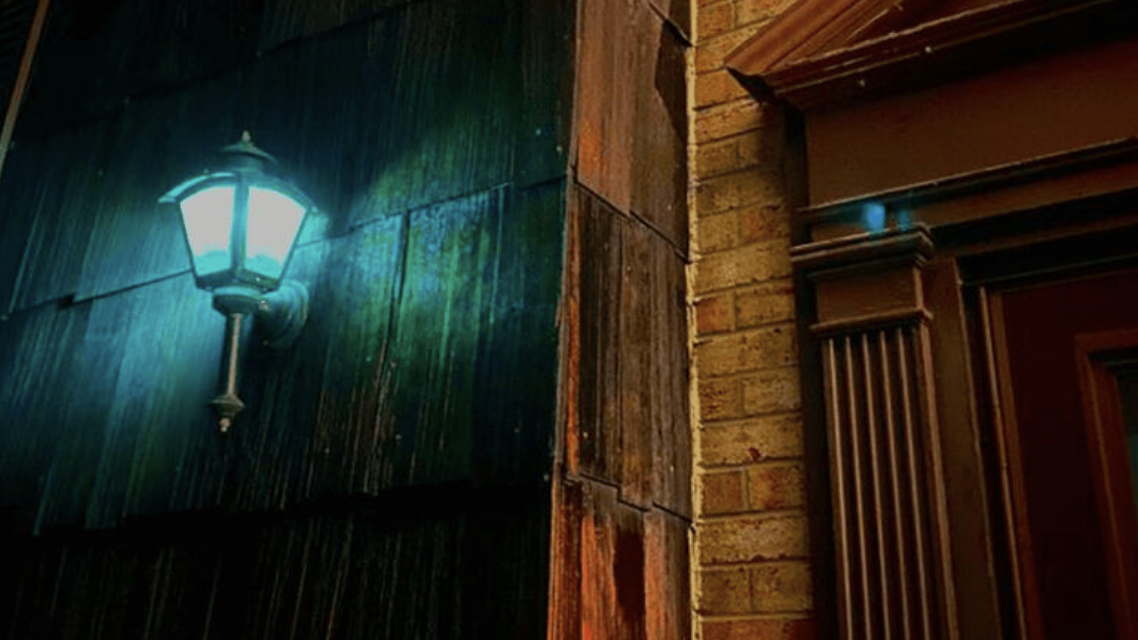
In 2017, a deeply moving Instagram post showed a lantern glowing green outside someone’s front door. “Thank you to all the veterans out there who served, fought, sacrificed… choosing to put their lives on hold and run to the sound of chaos because they believed in something bigger than themselves,” the user wrote alongside the snap.
The Tribute
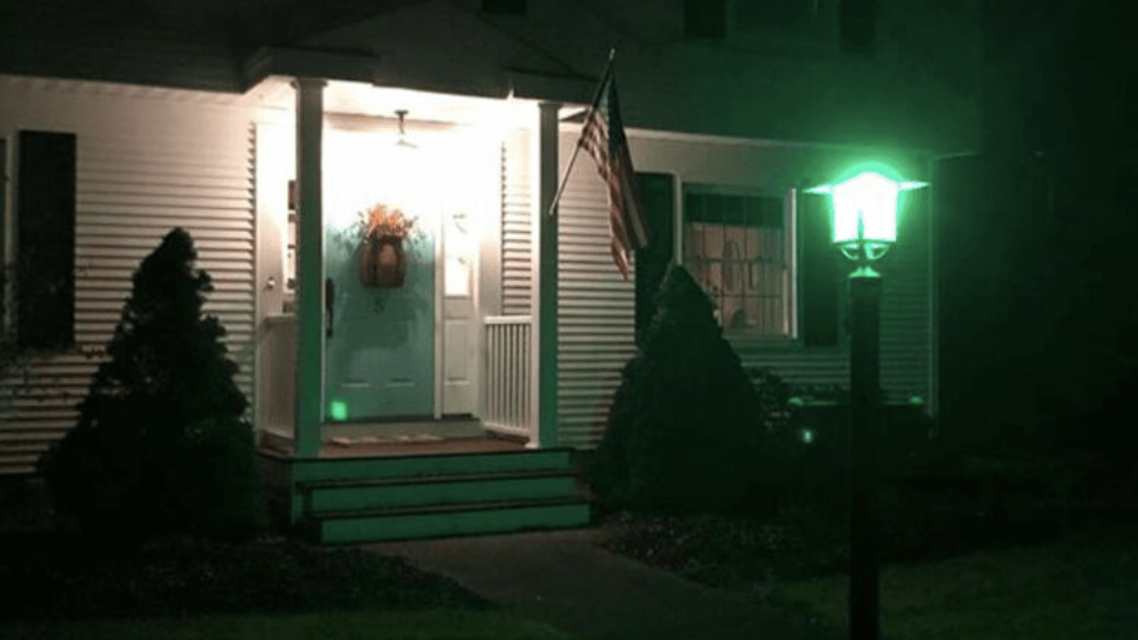
This internet user’s glowing tribute continued in the same vein. “Thank you to all the military families who have been and continue to be the glue and the foundation,” the grateful person continued. You will never be sufficiently thanked… You are proof that our liberties were never free.”
Expressing Gratitude
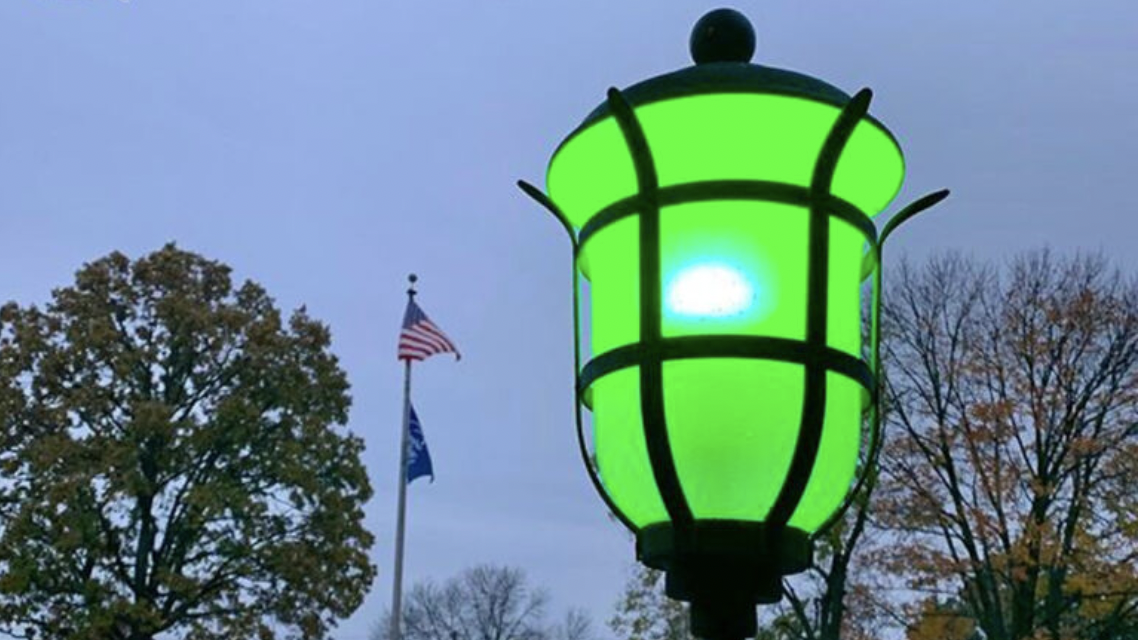
The participant concluded their post in support of the Green Light A Vet campaign by thanking all those who continue to serve today. “Thank you to all my brothers and sisters who are currently deployed finding and destroying evil all over the world,” she said. Stay safe and keep going!”